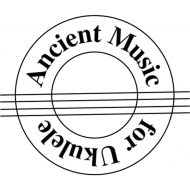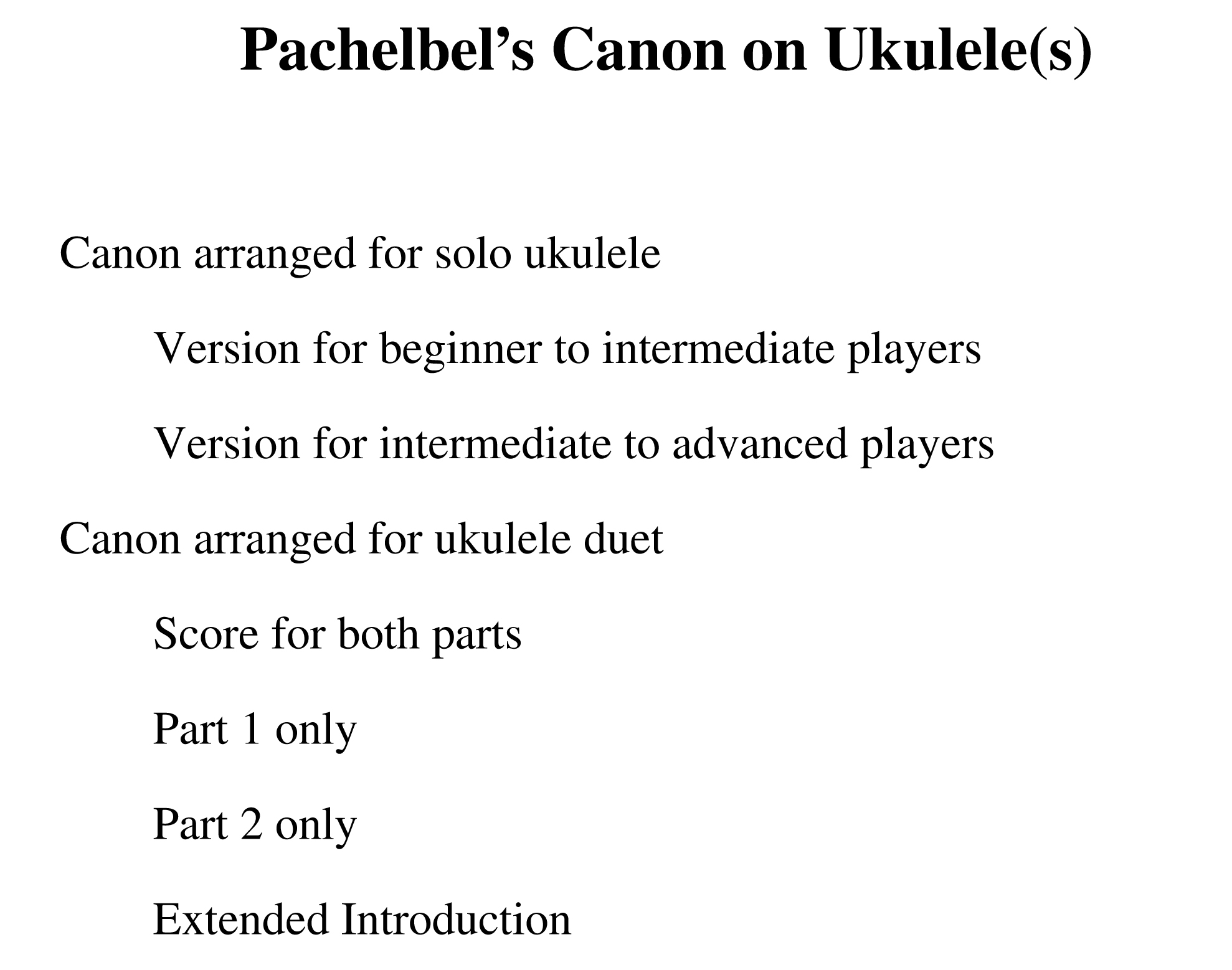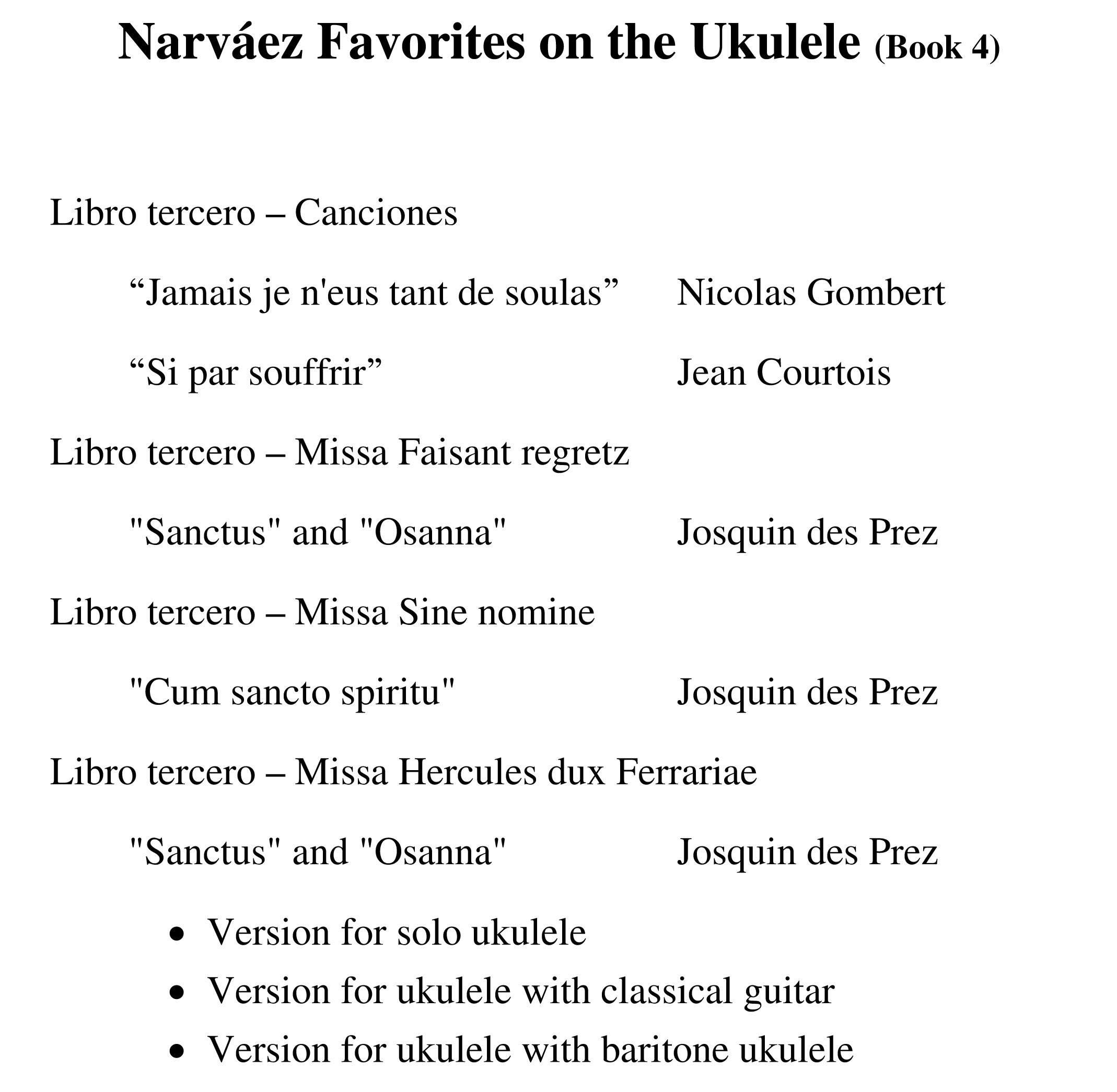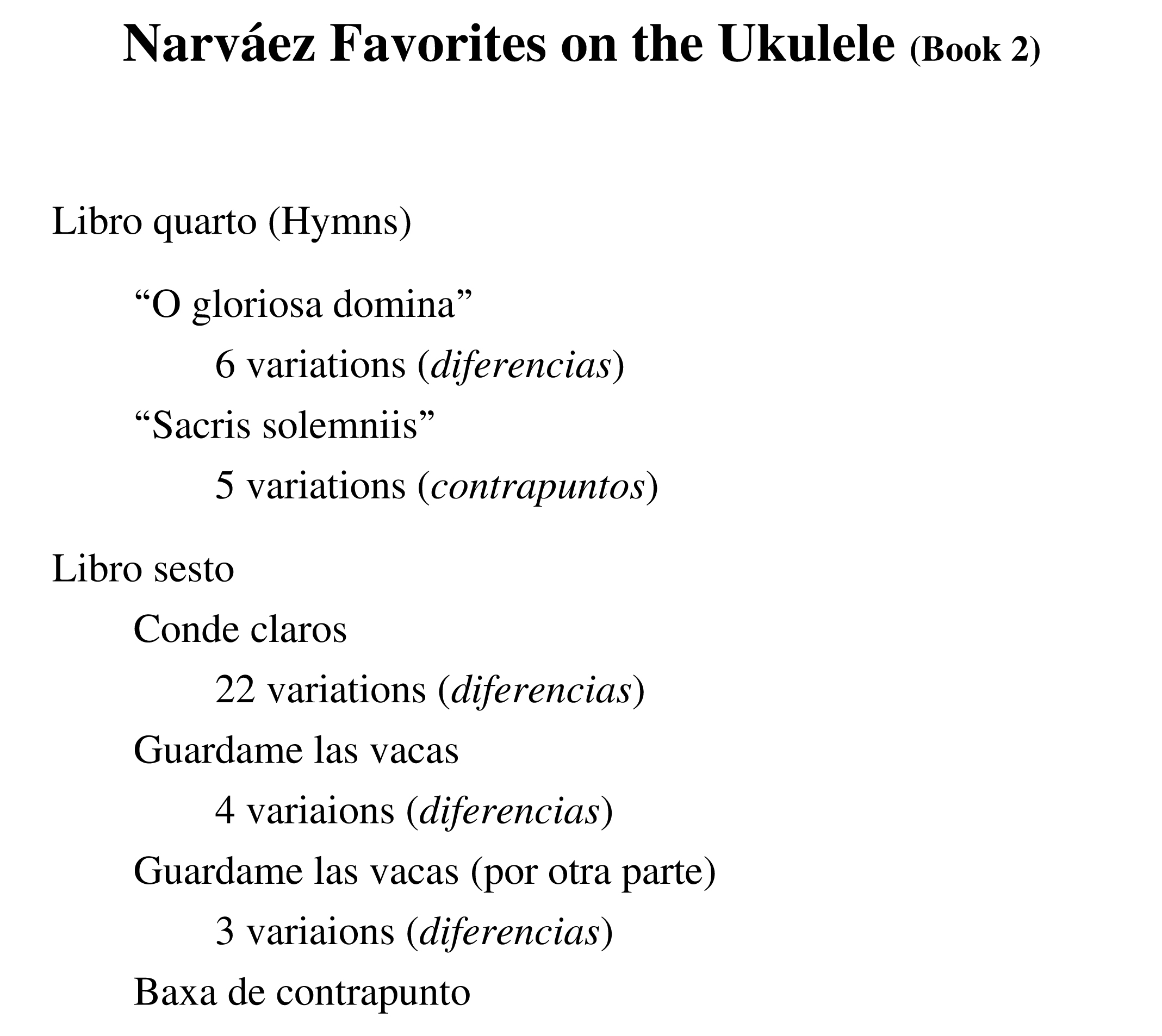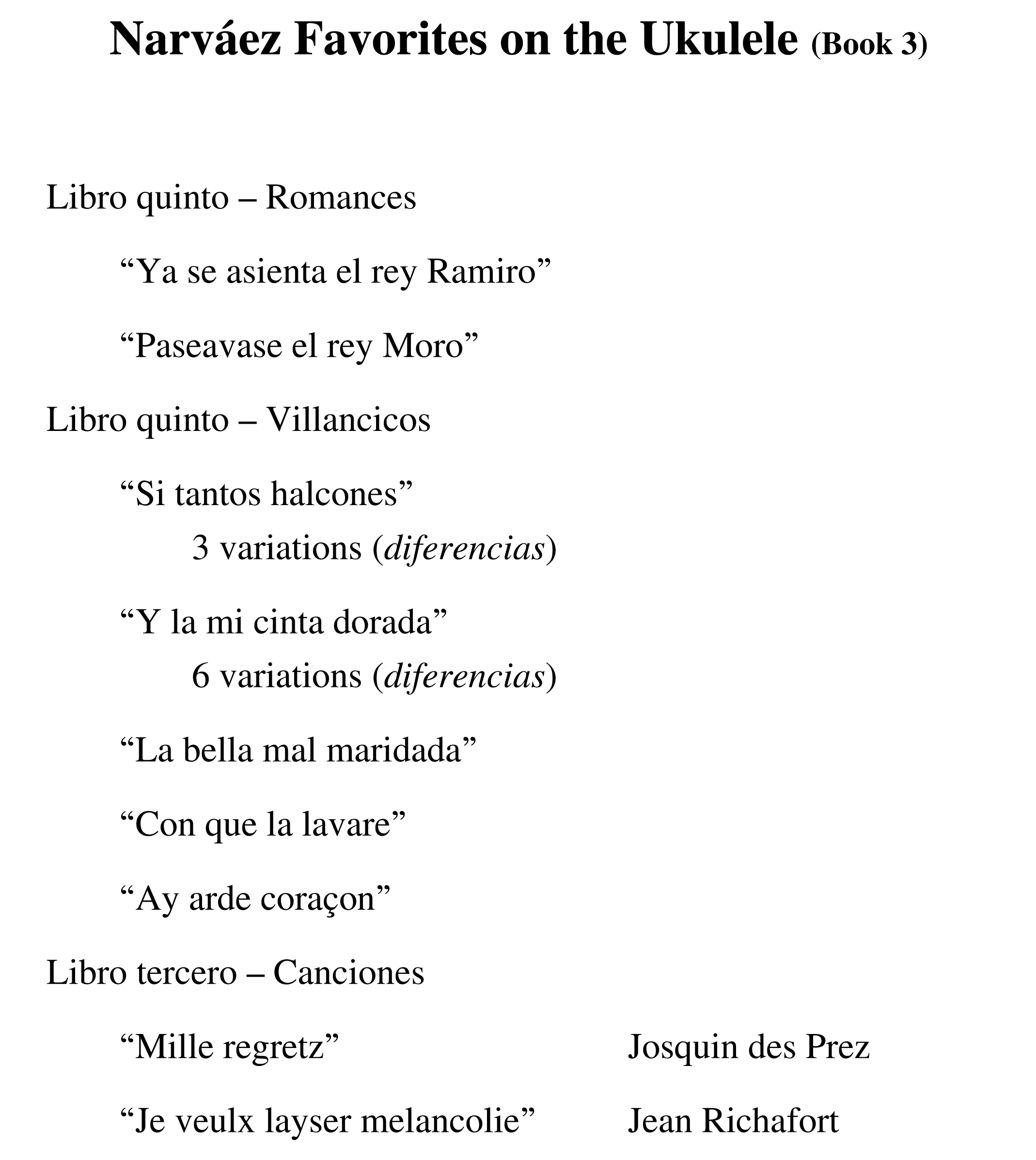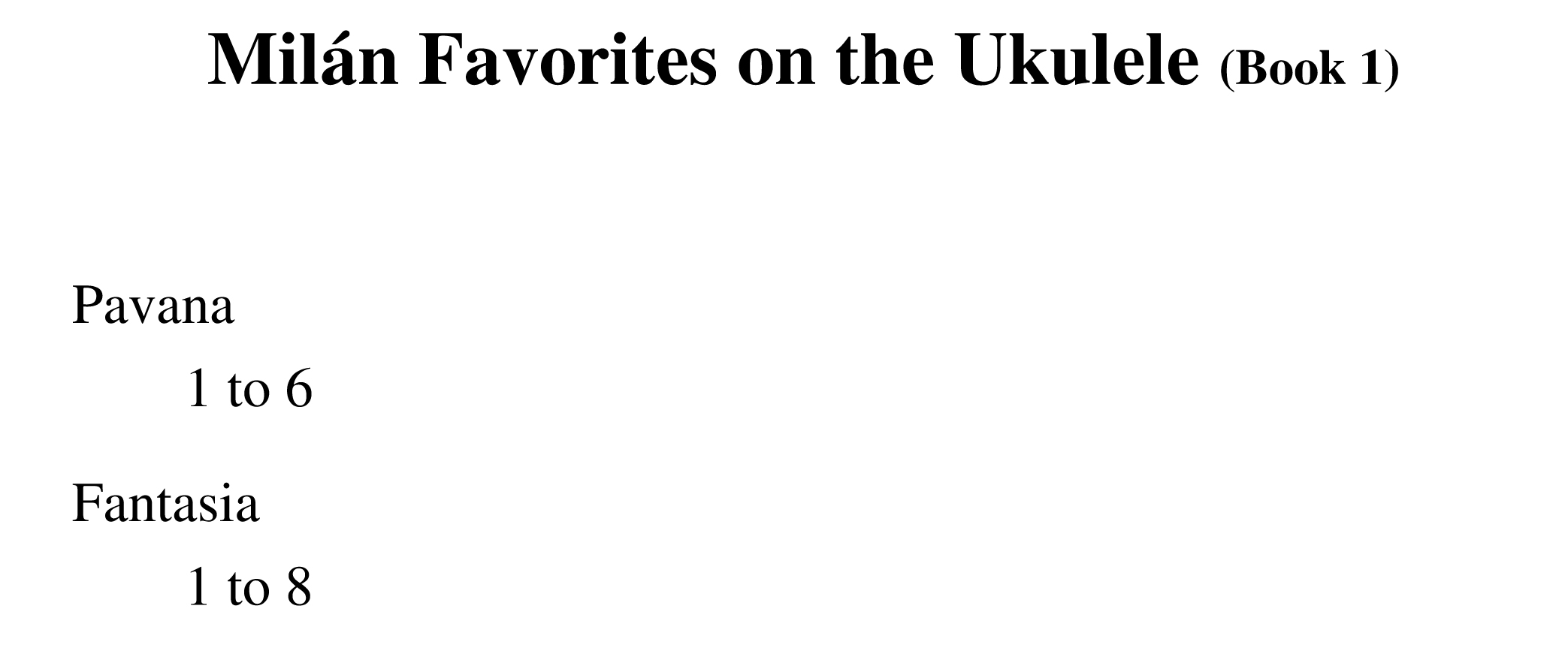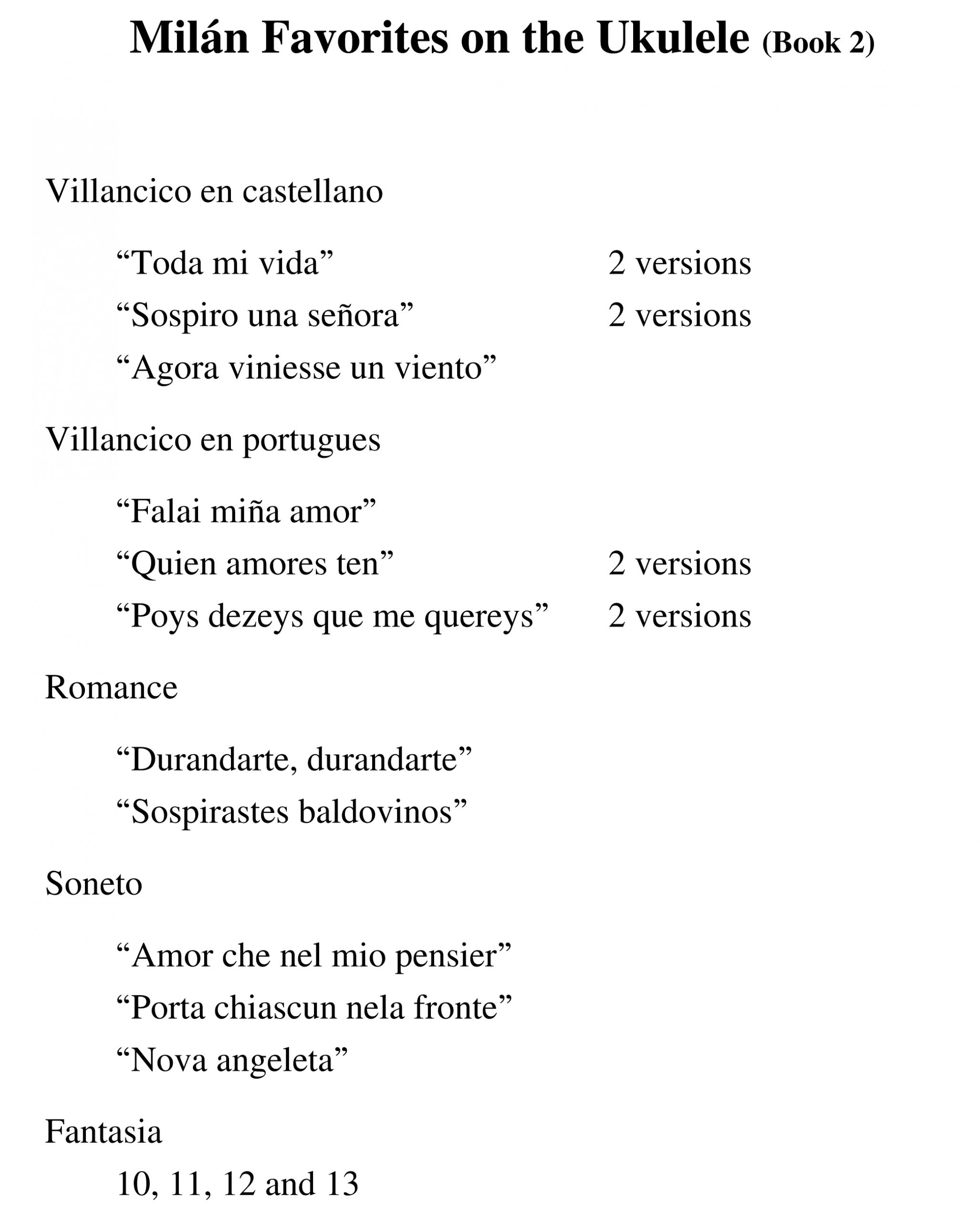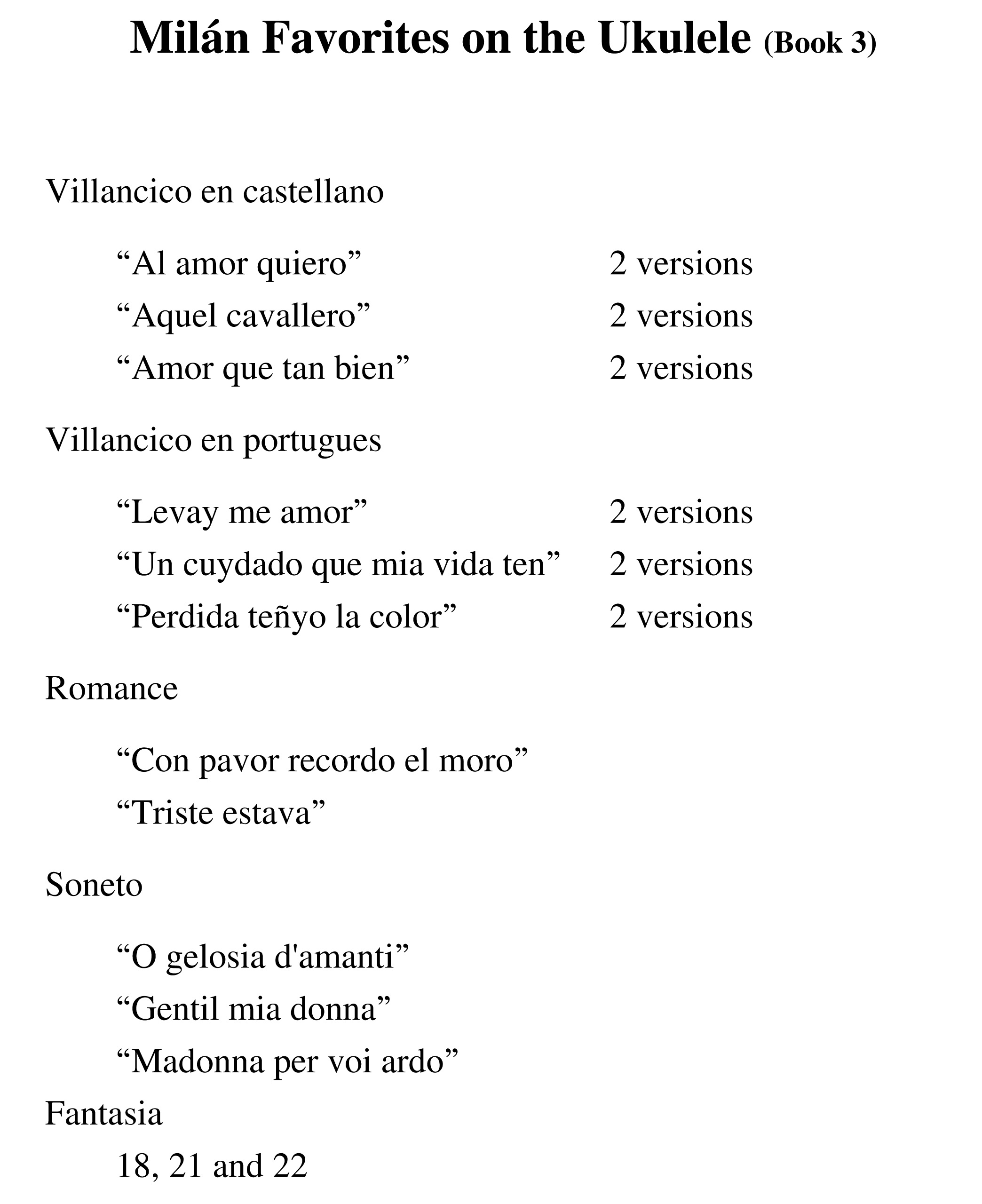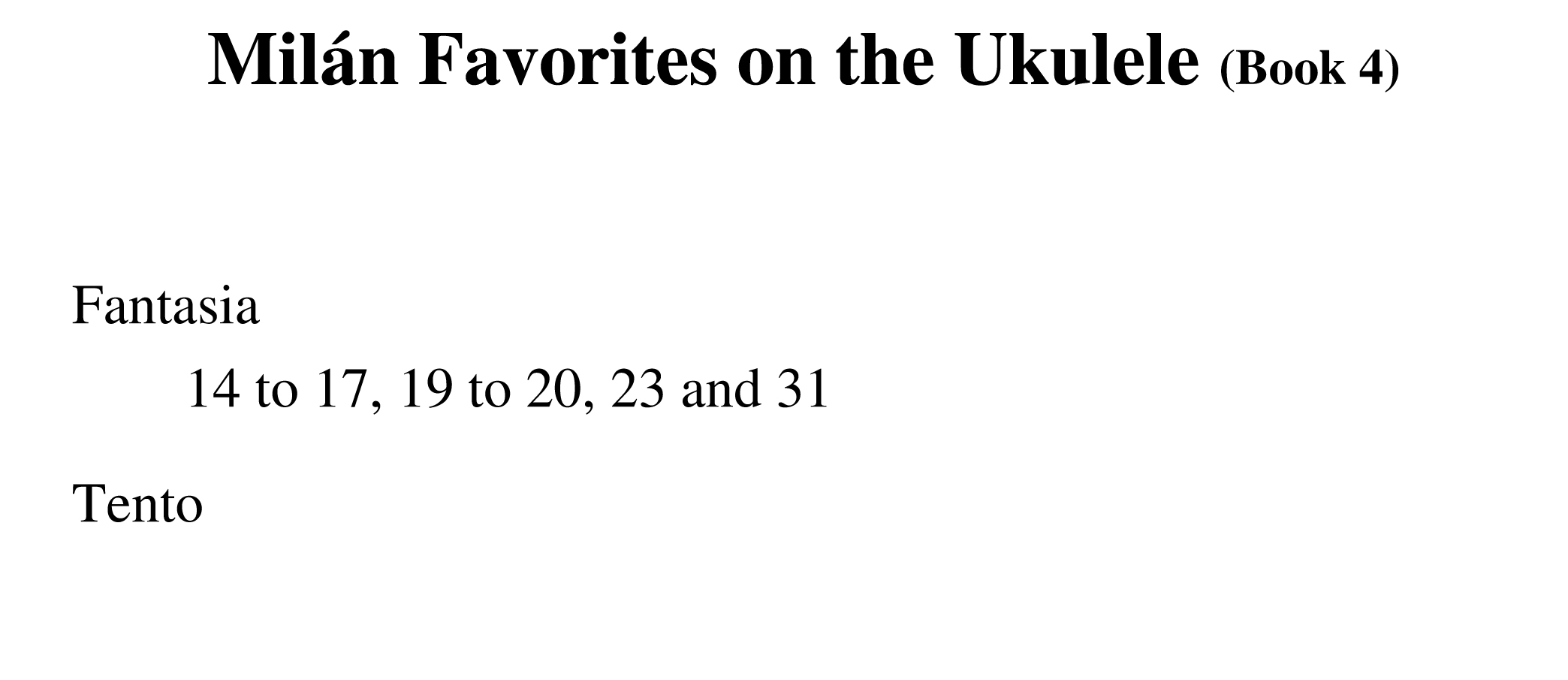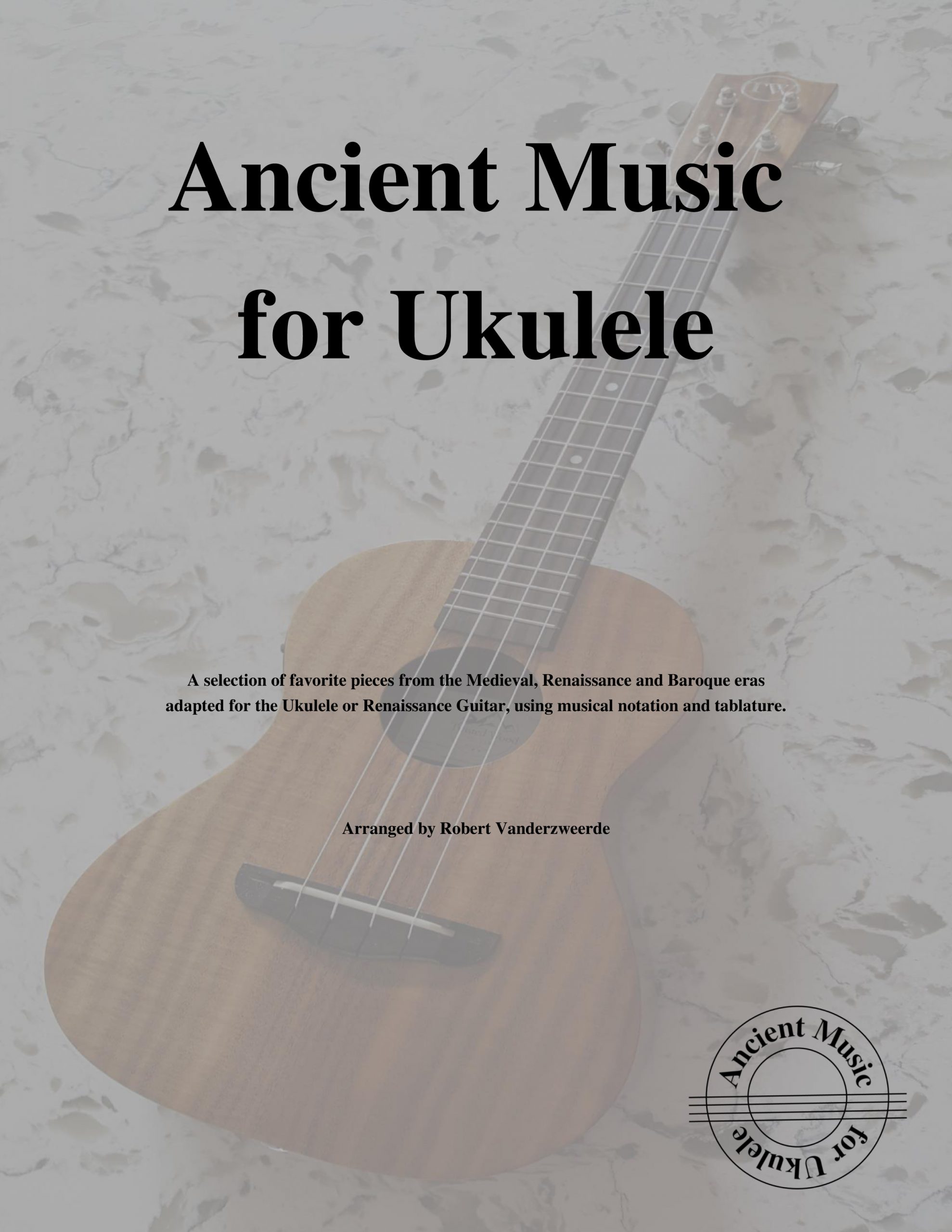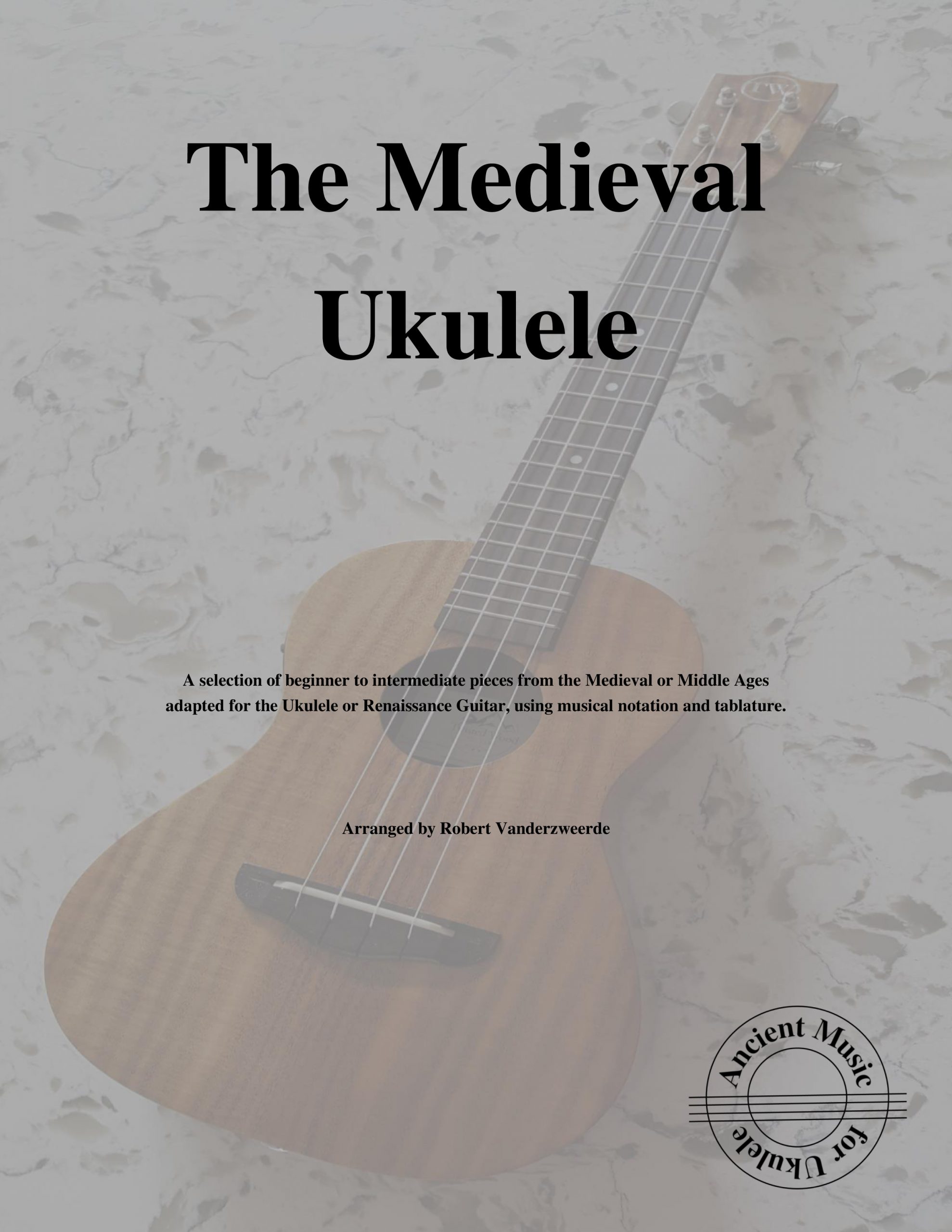- Project: Theatrum Musicum
I am currently working on two projects. This one I call the “Theatrum Musicum” project.
Peeter van der Phaliesen, Latinised as Petrus Phalesius, French versions of name Pierre Phalèse and Pierre de Phaleys (ca 1510 – 1575) was a Flemish bookseller, printer and publisher. Aside from a number of literary and scientific works, his printing press is mainly known for its publications of music.
My project is to arrange pieces from two publications by Petrus Phalesius, namely Theatrum Musicum in 1563 and Luculentum Theatrum Musicum in 1568 (both referred to as Theatrum Musicum in the arrangements). They are intabulations of the guitar, lute and vihuela music of Renaissance composers, however, Petrus Phalesius only identified some composers when naming the pieces. Fortunately, many have been identified or attributed subsequently.
Most of the pieces are for the advanced performer, with some intermediate level music. They include fantasias, danses, chansons, moteta and duets.
I posted a sample on Facebook and YouTube. It’s a Fantasia by Guillaume Morlaye (ca 1510 – 1558). Enjoy!
- Project: Classical/Romantic Era
I am currently working on two projects. This one I call the “Classical/Romantic Era” project.
As a classical guitar student, I worked my way through many method books and anthologies including those by Aaron Shearer, Anzaghi, Julio Sagreras, Mauro Guiliani, Matteo Carcassi and the Royal Conservatory of Music. Included in those publications were pieces written by composers which I consider to be in the first golden age of the guitar (about 1790 to 1860) before it was overtaken by the rise of the popularity of the piano forte.
I played many pieces by Ferdinando Carulli (1779-1841), Fernando Sor (1778-1839), Matteo Guiliani (1781-1829), Dionisio Aguado (1784-1849), Matteo Carcassi (1792-1853) and others, and still play them today. So, I searched my music books and recordings to identify the best pieces used for teaching, yet are still enjoyable as miniatures on their own. Of course, most technical studies were eliminated but there were many pieces to include and I am searching out the original folios and then arranging them for ukulele.
The selected pieces are all beginner to intermediate level (roughly RCM grades 1 to 3). There are plenty of more advanced pieces by these composers but I experimented playing them on ukulele and they sounded “thin” as there are fewer strings on the ukulele, so I did not consider these for inclusion.
I posted a sample on Facebook and on YouTube. It’s the Country Dance by Ferdinando Carulli. After technical exercises, it was the second piece I ever played as a student. Enjoy!
- An anomoly in the folio of the music by Dalza
I am currently working on the music by Joan Ambrosio Dalza (flourished 1508), who was a Milanese lutenist and composer. His surviving works comprise the fourth volume of Ottaviano Petrucci’s influential series of lute music publications, Intabolatura de lauto libro quarto (Venice, 1508).
The lute folio is fairly standard for that time period, but I came across an anomoly that I cannot explain. It’s in the Saltarello movements of all the pieces named Pavana alla Ferrarese. Can you see it?

The peice is marked C3, which means three beats to the bar. But the tabulature is written out as two beats to a bar.
I analyzed the music and it really is in three. For a single phrase, the original folio shows 12 bars of 2 beats each, but it’s really a phrase of 8 bars of 3 beats each (both 24 beats in total).
Why?? I don’t know. This notation is easier to read than what would have been used (i.e. quarter and eighth notes rather than a series of triplets), but it’s difficult for the performer to see the phrasing as the bass note beats are not always at the start of the bar and an ascending or descending note passage is often split over two half bars.
SO, I arranged the music back into the correct phrasing. Look at this snippet of the arrangement I created of the folio snippet that I showed above and see if you can align the phrasing.

It’s a lot more work to do this but, in the end, it should be easier for the performer to play.
- Working on the Capirola LutebookI decided to start on the Capirola Lutebook (1517). It’s beautifully illustrated … deliberately added to ensure that the book would be preserved (sample page shown below). The music was actually written down by Vincenzo’s pupil Vitale. The lutebook has a substantial text on lute playing technique, ornaments and notation—one of the most important sources on performance practice of the time (which I have not translated, nor have I found a translation yet).
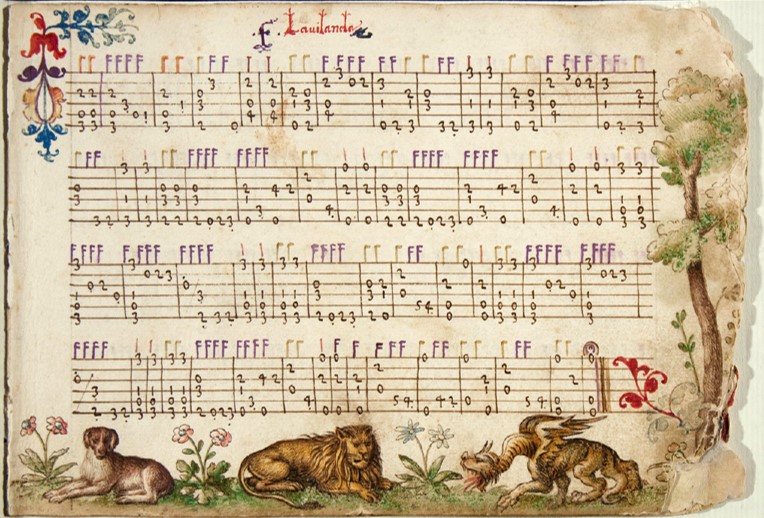 This photo shows my progress so far … yellow highlighted pieces are done but awaiting proofreading, green is in progress and blue has not been started yet. It may take a while …
This photo shows my progress so far … yellow highlighted pieces are done but awaiting proofreading, green is in progress and blue has not been started yet. It may take a while …
 CORRECTION: The original post had the composer’s name incorrect as Capriola. It’s Capirola.
CORRECTION: The original post had the composer’s name incorrect as Capriola. It’s Capirola. - What to arrange next?
So what do I arrange next? I have a large backlog of music from which to choose:
- Estevan Daza (El Parnasso, 1576)
- Enríquez de Valderrábano (Silva de sirenas, 1547)
- Francesco Spinacino (Intabulatura de lauto, 1507, Libro 1 & 2)
- Joan Ambrosio Dalza (Intabulatura de lauto, 1508, Libro 4)
- Vincenzo Capirola (Lutebook, 1517)
- and much more!
Also, I’m thinking of arranging some Dutch folk songs but only those that were and are still sung during family get togethers (remember, although I’m Canadian, my family emigrated from Amsterdam in the Netherlands).
Any suggestions?
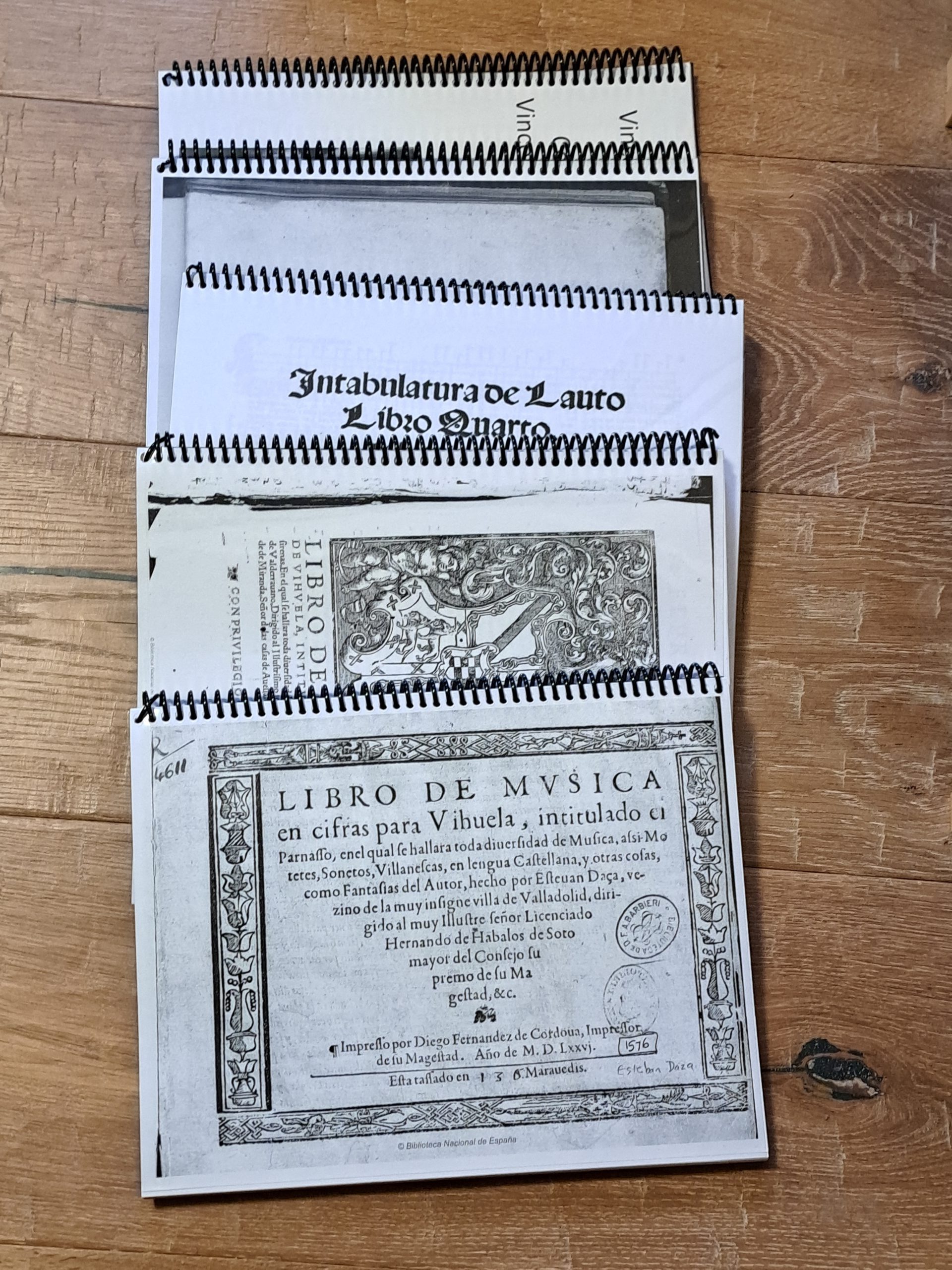
- Accomplished to date
As we come out of the summer season, I’m looking at what has been accomplished so far in the ongoing project to arrange Medieval, Renaissance and early Baroque music for ukulele. Here’s a picture of the complete library of 68 books with almost 1000 arrangements. Search for “Ancient Music for Ukulele”, visit any book store online, or contact me for details.
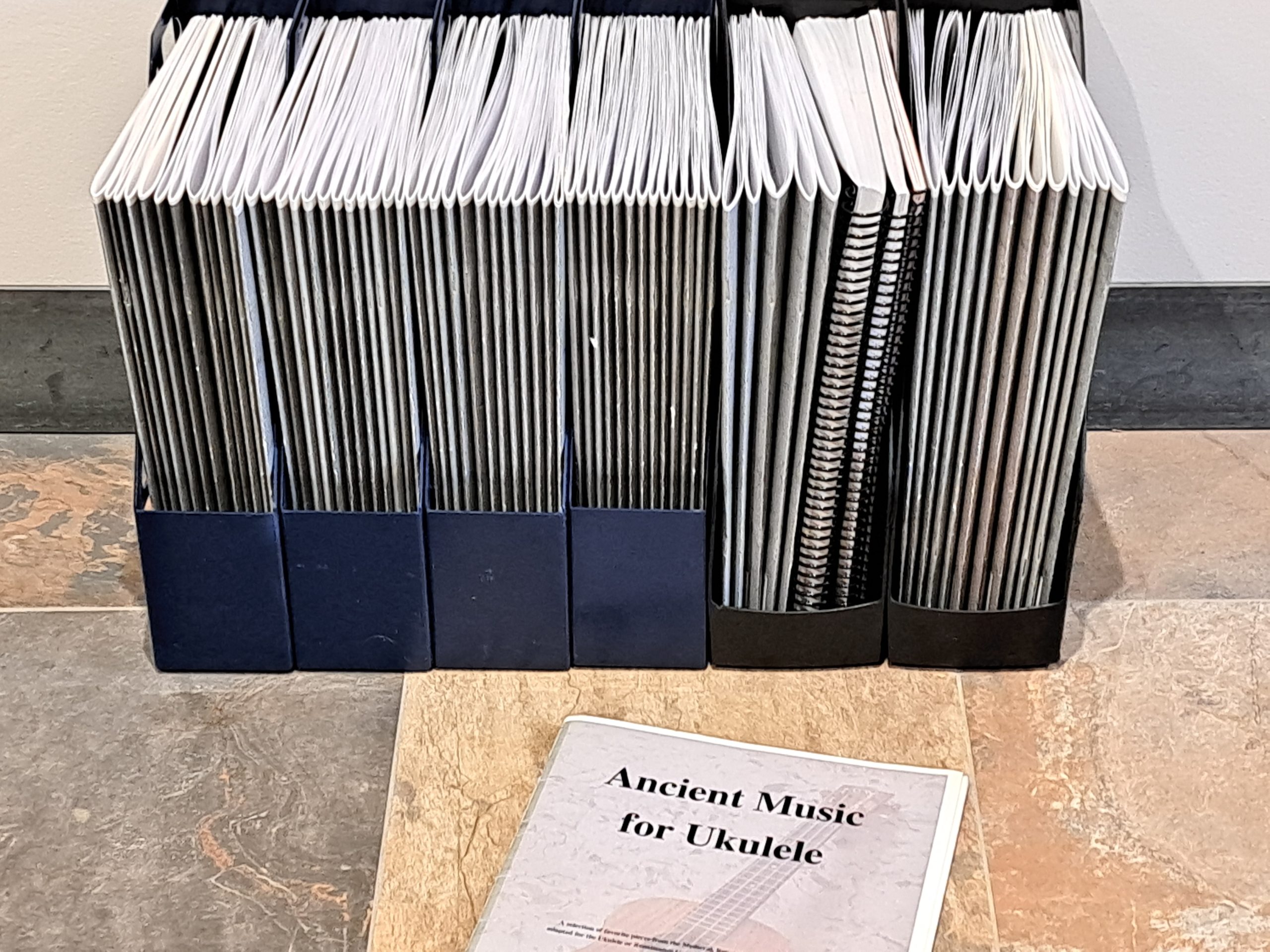
- Francesco da Milano
In anticipation of completing two more books of the music of Francesco da Milano, I am offering this piece as a free sample. You can save the attached picture (it’s page sized and should print okay) or ask me and I’ll send you the PDF. Here’s a link to the audio/video … https://youtu.be/CuSPejBiEFs

- Nederlandsch VolksliederenboekDuring a family gathering in late 2022, my cousin brought books of old family photos. My aunt, aged 81, and I had fun going through them trying to identify everyone and everyplace. My mother would have known more but she passed away 4 years ago at age 89. Nevertheless, we were quite successful except for the very early 1900’s. It was lots of fun with great memories and family history.In the stack of photo albums, was a dark brown, hard cover book of music, called “Nederlandsch Volksliederenboek” (i.e. a book of Dutch folk songs) from 1916. It has writing in it on various songs. I picked a child’s song at random, Sint Nicolaas (Saint Nicholas; pronounce the “aa” as “ah” in Englsih) and showed it to my aunt. She read the words and then immediately sang it. Wow!My aunt grew up in the Netherlands and emigrated to Canada when she was 18. My parents emigrated to Canada 2 years earlier when they were about 29 but I was only 3. I know a few Dutch folk songs but not too many (this one sounded vaguely familiar).Here’s the suspected history of the book. It was in my uncle’s possession but it is much older than he is. It may have been my grandfather’s who was 10 years old when this book was published. Most likely, it was my great-grandfather’s book and, since he was a professional singer (operatic bass), he likely used this book to teach his students or it was a gift. The handwriting in it is likely his.I looked online for this book and discovered that it was in continuous print from 1896 to at least 1925 (there is one version dated 1940). You can still buy second-hand copies of it at a reasonable cost.So I decided to try to arrange a few of them and, of course, I’m starting with this one. By the way, Saint Nicholas day in the Netherlands is December 6. I do recall putting out my wooden shoe (yes, I had a pair) and getting an orange and chocolate from Saint Nicholas. If you were bad, Black Peter, his assistant, would leave you a lump of coal instead. I guess getting the belt was a much older corporal punishment that is now outdated.I’ve provided a rough English translation. Some phrases just don’t translate well. If anyone has better wording, I’d be grateful. I’m also putting together a Dutch pronunciation guide for English speakers, first created by my mother (e.g. koek, or cake, is pronounced as kuk). I speak Dutch with an English accent so I need this too.

 To download, save each image individually (the images are full sized pages). If this fails, please contact me and I will send you the PDF file.
To download, save each image individually (the images are full sized pages). If this fails, please contact me and I will send you the PDF file. - Motete
I am just completing a set of three volumes of motetes (motets) and, to share my anticipation, I’m published this one motete as a free sample.
A motete or motet is mainly a vocal musical composition in several parts with words. Motets were mostly sacred madrigals. Secular motets, known as “ceremonial motets”, were typically to praise a monarch, music or commemorate a triumph.
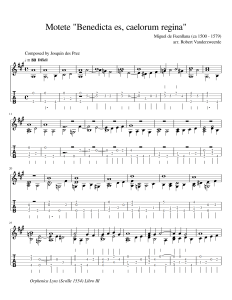
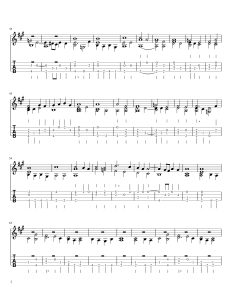
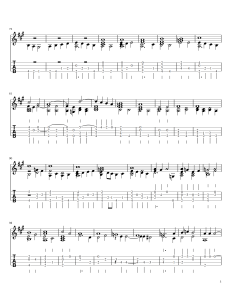

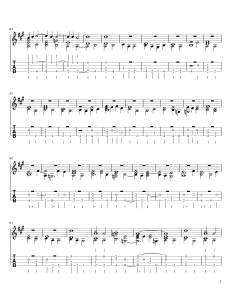

To download, save each image individually (the images are full sized pages). If this fails, please contact me and I will send you the PDF file.
- Fabordon
I came across this piece while I was arranging a series of 16th century motetes in Orphenica Lyra by Miguel de Fuenllana. It is descirbed as “… en fabordon conpuestos” or using compound fabordon.
Fabordon (also fauxbourdon, fauxbordon, and falso bordone) – false drone – is a technique of musical harmonisation used in the late Middle Ages and early Renaissance. The homophony and mostly parallel harmony allow the text of the mostly liturgical lyrics to be understood clearly. In its simplest form, it consists of the cantus firmus (drone) and two other parts a sixth and a perfect fourth below. To prevent monotony, or create a cadence, the lowest voice sometimes jumps down to the octave, and any of the accompanying voices may have minor embellishments.
Think of it as a series of chord progressions with some passing notes.
This piece is written in “ochotonos” or eight different tones.
The text in latin “Donee ponam inimicos tuos …” means “Give me your enemies … and I will lay them at your feet” (i.e. slay them).
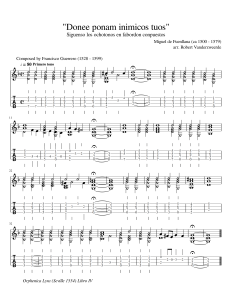
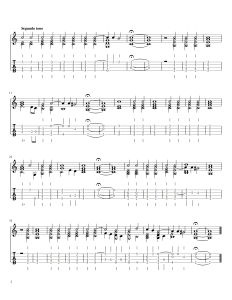

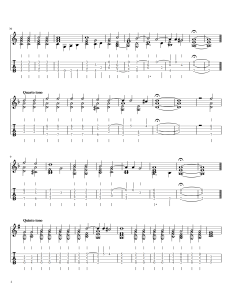
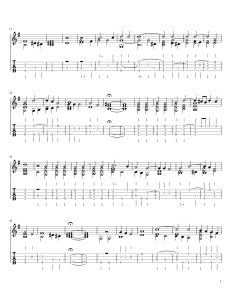

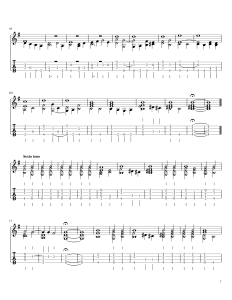
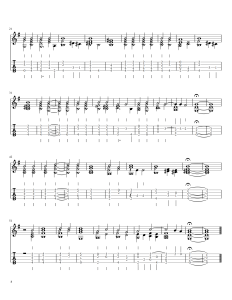
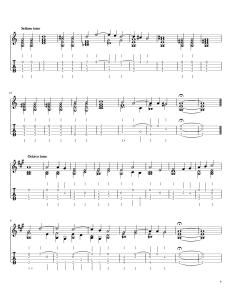
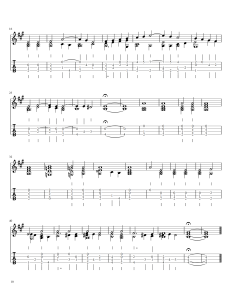
To download, save each image individually (the images are full sized pages). If this fails, please contact me and I will send you the PDF file.
- Free vocal / instrumental musicIn Libro III (book 3) of Tres libros de musica en cifras para vihuela (1546), Alonso Mudarra (ca 1510 – 1580) presents a series of pieces with separate but aligned vocal and vihuela parts. To celebrate my experience with reading Mensural notation (see more detail in “Music with vocal and instrumental parts”), I am making two of the versos and two of the psalms available for free. The scores are available here.A verso is simply a verse set to music.“Regia qui mesto” is a lament for the death of Princess Mary Manuela of Portugal. View/listen to it on YouTube. In this recording, a clarinet is chosen to represent the vocal line and the vocal/instrumental phrasing matches the text in the first verse only (the phrasing should be changed based on the text in the next two verses).“Beatus ille” is my favorite verso. It’s marked in his book to be played/sung at a moderate tempo. However, that sounded too much like a dirge so I listened to some recordings and found one at at quite a fast pace. Here it is at 200 bbm, more than twice as fast as Mudarra intended. I like it as the rhythms really stand out and are kind of off-kilter (i.e. short notes when you expect long notes, lots of notes on the off beats). A clarinet simulates playing the vocal part. Have fun listening to it on YouTube. Sorry, this one is not free and you’ll have to wait until I publish the book “Mudarra Favorites on the Ukulele (Books 4 and 5)” in about 10 days time.“Dulces exuviae” is a setting of Dido’s final monologue from Book IV of Virgil’s Aeneid. View/listen to it on YouTube. In this recording, a clarinet is chosen to represent the vocal line and the vocal/instrumental phrasing is the arranger’s interpretation (the phrasing should be changed based on the text). NOTE that this verse has been set to music by many composers, including Josquin des Prez, so when searching for other performances, make sure to include “Mudarra” in your search criteria, otherwise all the results will be the music of Josquin.The Mudarra psalms are the first instrumental fabordones, or for voice and instrument. A fabordone or fauxbourdon is a musical technique of harmonization, or chant, used in the music of the end of the Moyen Age and the debut of the Renaissance. The monotony of parallel cords favors the understanding of the text in Latin.“Nisi Dominus” is a setting of Psalm 126. View/listen to it on YouTube. A clarinet is used to simulate the vocal part.“Exurge, quare obdormis” is a setting of Psalm 43, verses 23-24. View/listen to it on YouTube. A clarinet is used to simulate the vocal part.
- Music with vocal / instrumental parts
Libro III of “Tres libros de musica en cifras para vihuela” (1546) by Alonso Mudarra has a series of pieces for voice with vihuela accompaniment. In most other books, the vocal part is written in the same tabulature as the instrumental part with either a different colour or other marking to separate the parts (in fact, two of the pieces are written this way). Mudarra presents this differently with separate systems for each part. The vihuela lines use standard Italian tabulature (i.e. the highest sounding string is on the lowest line of music) using vihuela tuning. The voice is presented using Mensural notation (which I am learning how to read; good explanation in Wikipedia) but with a twist – there are bar lines in the music and it is aligned with the vihuela bar lines. The illustration attached of a Motet shows this as well as my arrangement for ukulele and voice/instrument (i.e. the voice line need not be sung, it can be played using any instrument such as a flute or oboe). I am looking up the words, in Latin in this case, and translations to ensure that I get them right as the original folio does not show the words, only the syllables – in my arrangement, the syllables are joined with dashes to form words. It’s a bit of a mind bender but it’s actually satisfying to hear the software play the music with ukulele and recorder.
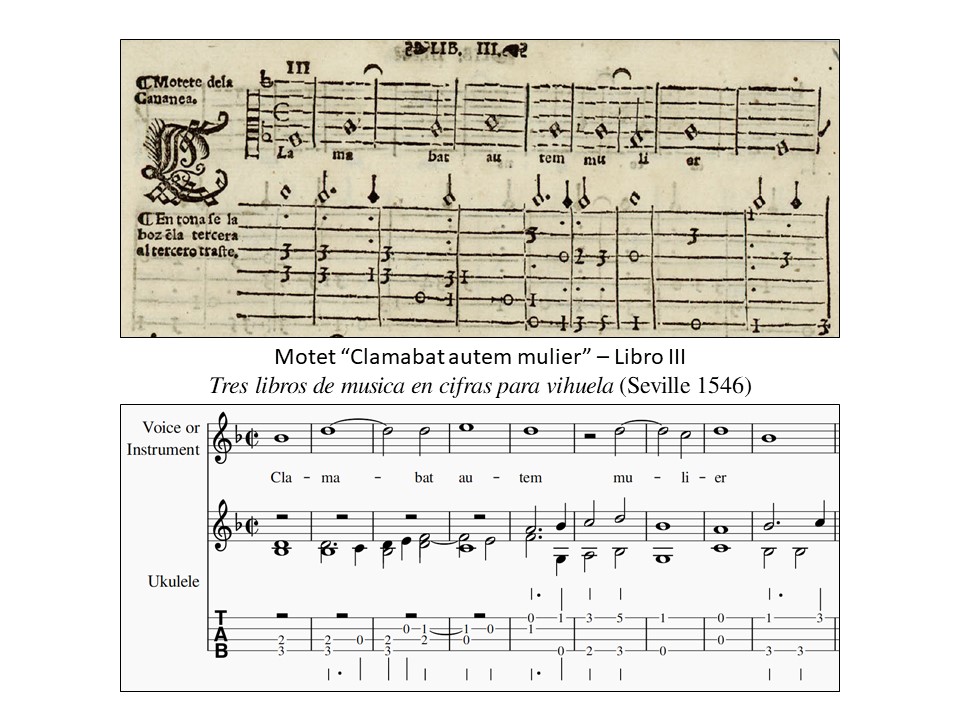
Words
Clamabat autem mulier channanea ad Dominum Jesum, dicens: Domine Jesu Christe, fili David, adiuva me; filia mea male a demonio vexatur.
Respondens ei Dominus dixit: Non sum missus nisi ad oves quae perierunt domus Israel.
At illa venit et adoravit eum dicens: Domine, adiuva me.
Respondens Jesus ait illi: Mulier, magna est fides tua, fiat tibi sicut vis.Translation
A woman of Canaan cried to the Lord Jesus, saying: Lord Jesus Christ, son of David,
help me; my daughter is grievously troubled by a devil.
And he answering, said: I was not sent but to the sheep, that are lost of the house of Israel.
But she came and adored him, saying: Lord, help me.
Then Jesus answering, said to her: O woman, great is thy faith: be it done to thee as thou wilt.
Subsequently, in April 2022, several versos and psalmos were made available for free and, in May 2022, two books of vocal/instrumental music by Mudarra were published.
- Working on music by Mudarra
Working on the music of Alonso Mudarra (ca 1510 – 1580), a Spanish composer, from his 1546 publication Tres libros de musica en cifras para vihuela (three books of music in numbers for vihuela). It’s quite refreshing after the dense and complex music of Fuenllana. Of course, reading Spanish tabulature is always challenging as it’s upside down to our modern notation. I’m starting with the first two libros (books) which are for vihuela or guitar only. The third and thickest libro has both vihuela and voice presented in separate staff lines which are aligned, much like a modern multi-part score (the music of Milan had the vihuela/voice lines combined but in different colours with the voice noted in red). I’ll need to learn how to read the voice notation, which makes arranging both challenging and enjoyable.

Subsequently, in April 2022, three books of instrumental music were published and, in May 2022, two books of vocal/instrumental books were published. Several versos and psalmos where were also made available for free.
- Vihuela, Lute and/or Guitar
When music written for vihuela or lute is arranged for ukulele, there is some loss in the bass as the vihuela/lute has 6 strings while the ukulele (or Renaissance guitar) only has 4 strings. I do have to figure out the harmonies/chords to try to preserve what the composer intended but with a smaller range of notes.
Is anyone interested in arrangements that preserve the 6 string configurations? In other words, I would be arranging the music for vihuela, lute, or guitar with an F# tuning for the third string. Mel Bay has already done this with all 40 Fantasias in Milan’s “El Maestro” where all the music is transcribed/arranged for 6-string instruments. There are others who do this as well for individual pieces, but you have to hunt for them.
I thought of this as I’m working on the music of Fuenllana (and planning for the music of Mudarra, de Milano and others).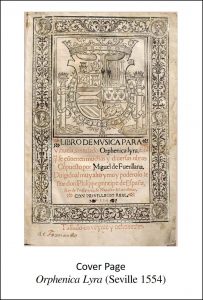
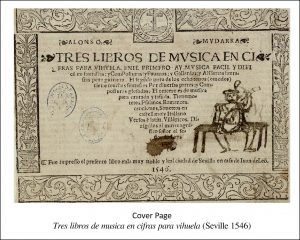

- Working on music by FuenllanaI’ve started arranging the the music by Miguel de Fuenllana (ca 1500-79) in his publication Orphenica Lyra (1554), especially the pieces written by the composer. There are 188 pieces in the six volume set of which 62 are written by Fuenllana with 52 fantasias, 8 tientos and 2 duos. The rest are arrangements or transcriptions by other Spanish, Flemish and Italian Renaissance composers of hymns, masses, motets, villancicos, outrages, madrigals, dirges, romances and sonnets.
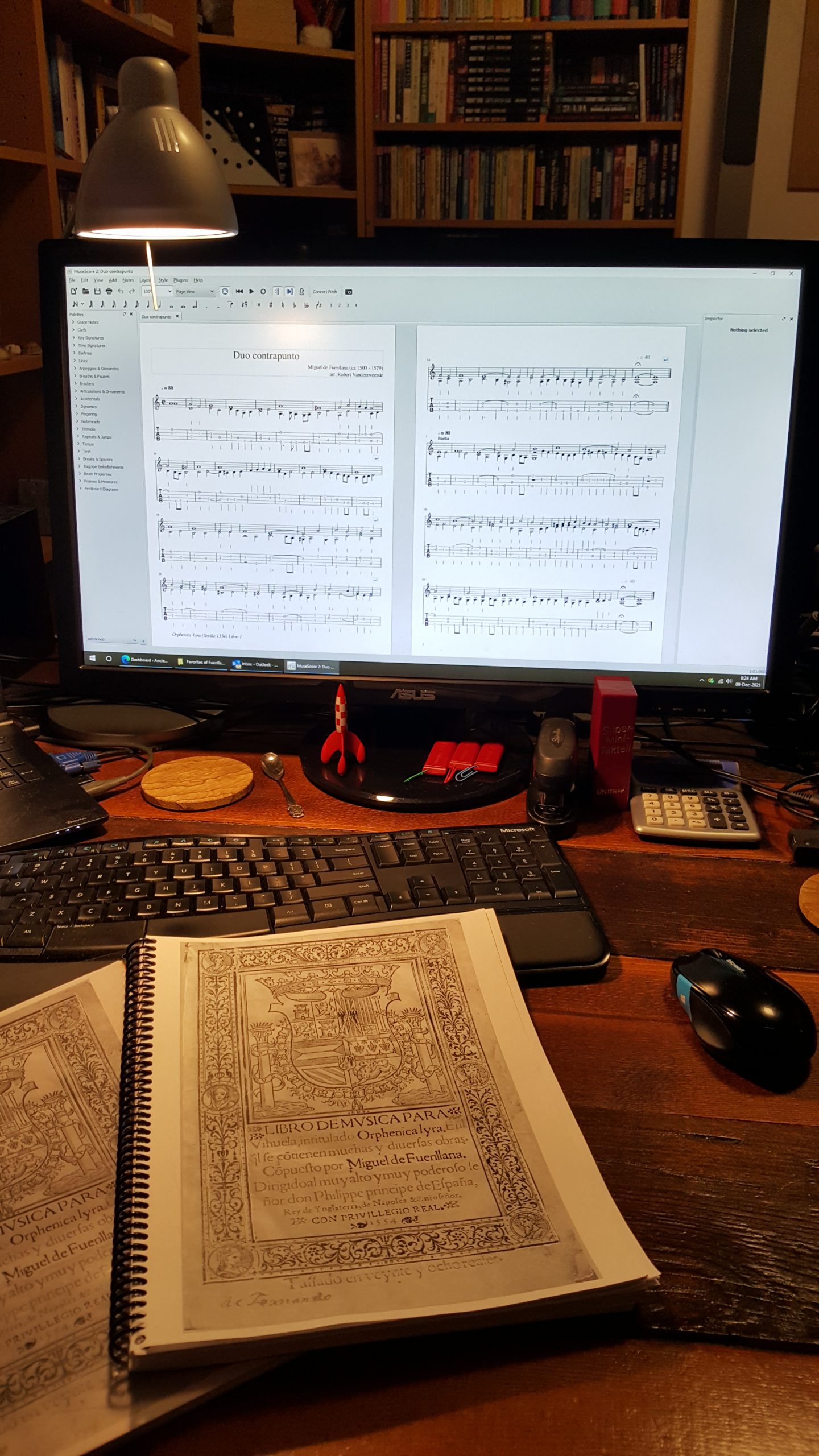 Update January 12, 2022 – Wow, the fantasies by Miguel de Fuenllana (ca 1500 – 1579) in “Orphenica Lyra” are challenging. They are pieces of “great solidity and complexity, with dense counterpoints”. Many of them are marked as “dificil” and only a few are “facil”. My arrangements may be just one of many possible interpretations. No wonder they’re not heard too often.
Update March 7, 2022 – Now finished, four books of vihuela music written by Miguel de Fuenllana. The works in Orphenica Lyra (1554) are challenging with even the “facil” (easy) pieces requiring advanced performance capabilities. The music is dense and difficult to interpret so my arrangements for ukulele may be only one of many possibilities. The books are available for sale and recordings are available on YouTube.
Update January 12, 2022 – Wow, the fantasies by Miguel de Fuenllana (ca 1500 – 1579) in “Orphenica Lyra” are challenging. They are pieces of “great solidity and complexity, with dense counterpoints”. Many of them are marked as “dificil” and only a few are “facil”. My arrangements may be just one of many possible interpretations. No wonder they’re not heard too often.
Update March 7, 2022 – Now finished, four books of vihuela music written by Miguel de Fuenllana. The works in Orphenica Lyra (1554) are challenging with even the “facil” (easy) pieces requiring advanced performance capabilities. The music is dense and difficult to interpret so my arrangements for ukulele may be only one of many possibilities. The books are available for sale and recordings are available on YouTube. - Re-starting after a hot summer in Canada
Okay, I’m almost ready to re-start working on ancient music after a hot summer of travel within Canada. It’s still quite pleasant in the mountains this September so I’m enjoying the outdoors as much as possible before the cold weather settles in. In the meantime, here are my thoughts on composers/music to arrange first (see photo), including detailed work on the Canon by Pachelbel for both duet and solo ukuleles based on a request from a follower. If you have any favourite music/composers from the Medieval, Renaissance or early Baroque, please let me know.
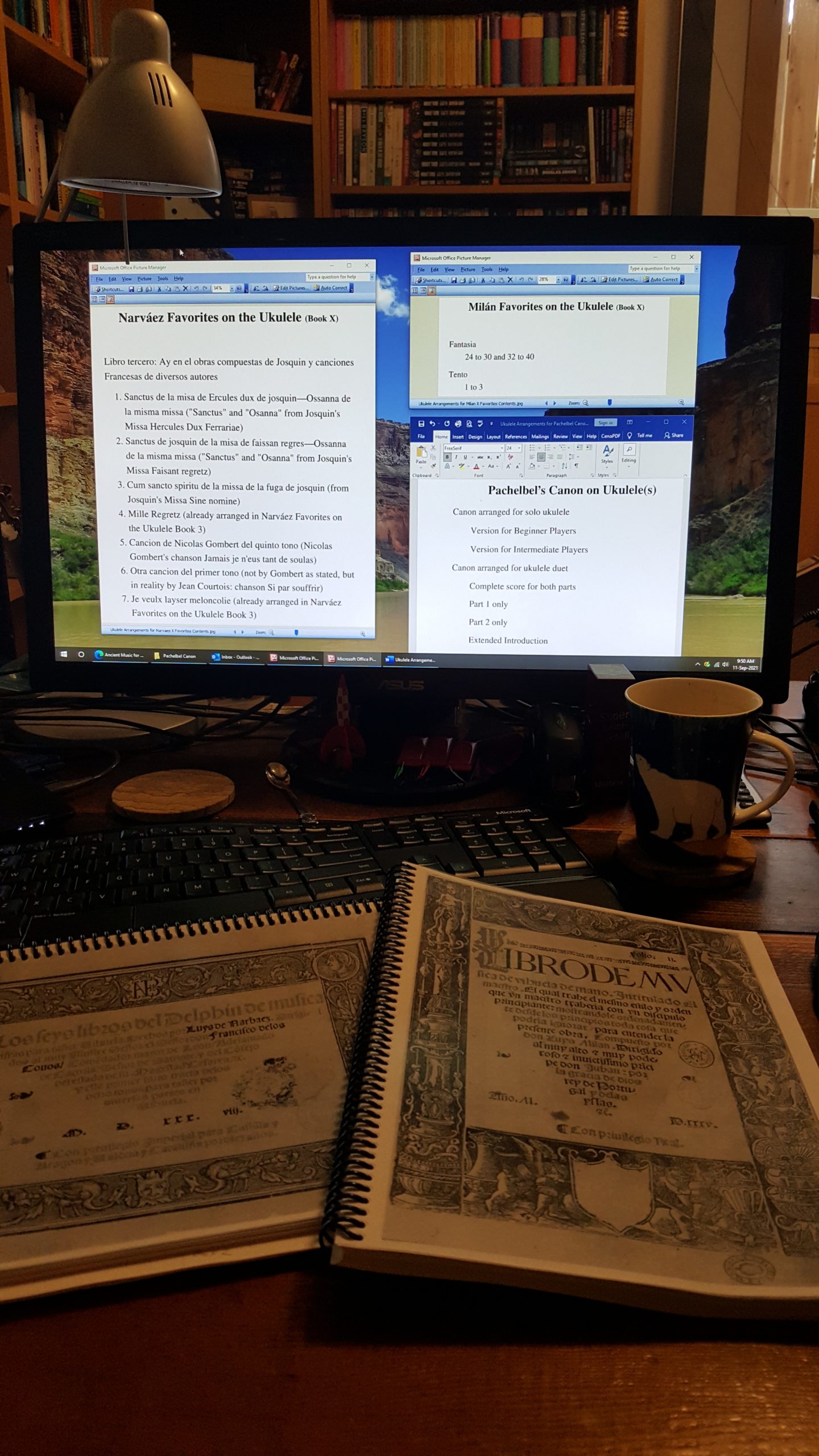
Update October 13, 2021 — the book Pachelbel’s Canon on Ukulele(s) is now available. Update October 23, 2021 — the book Narváez Favorites on the Ukulele (Book 4) is now available. Update November 27, 2021 — — the books Milan Favorites on the Ukulele (Books 5 and 6) are now available.
- Choosing who to arrange next
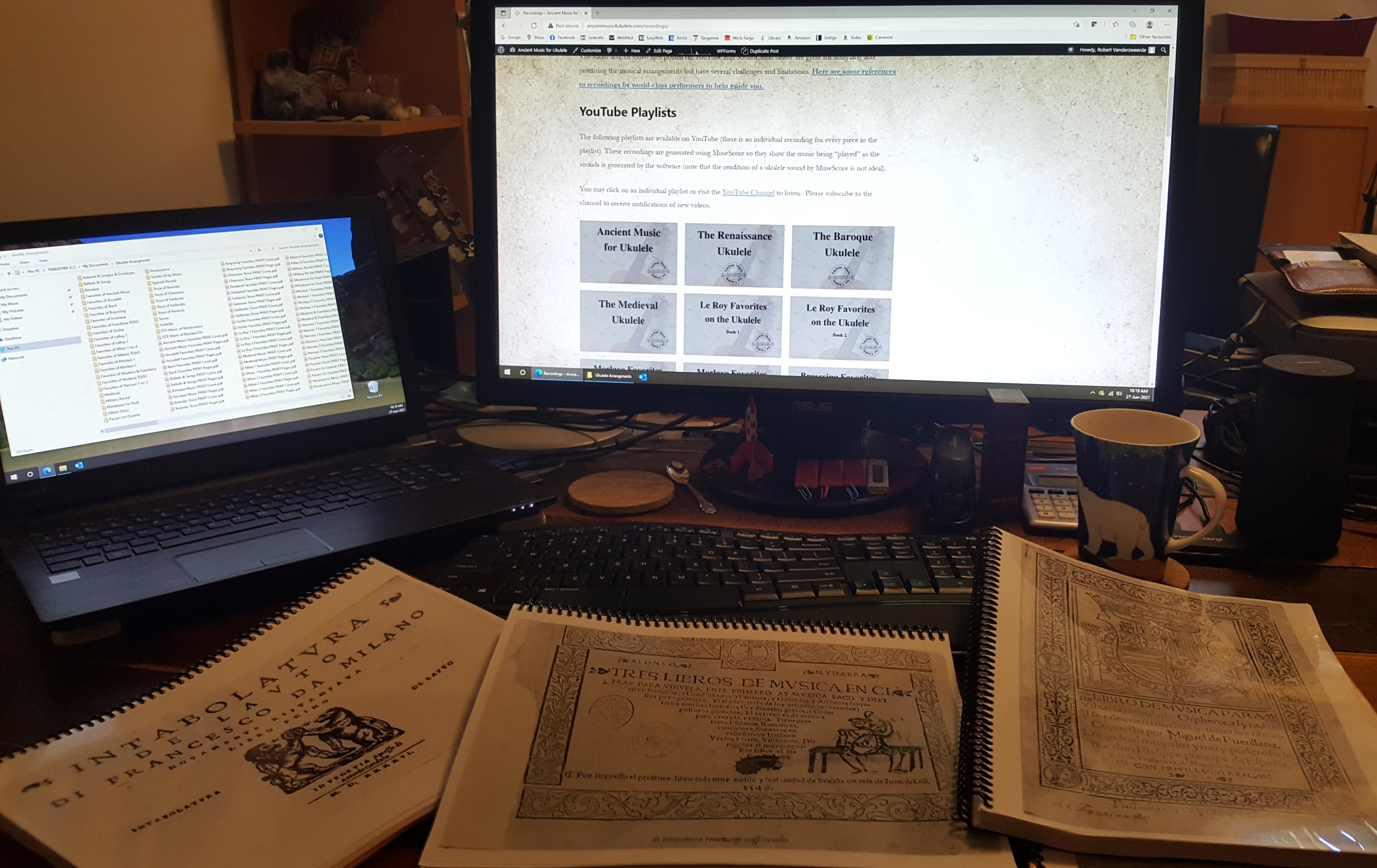 Choices, choices, choices. Who to arrange next? From left to right:
Choices, choices, choices. Who to arrange next? From left to right:
- Intabolatura de lauto (in 4 volumes) by Francesco da Milano (ca 1497 – 1543)
- Tres libros de musicaa en cifras para vihuela (in 3 volumes) by Alonso Mudarra (ca 1510 – 1580)
- Orphenica lyra, libro de musica para vihuela (in 6 volumes) by Miguel de Fuenllana (ca 1500 – 1579)
- Researching music by Luys de NarváezThe works of Luys de Narváez (flourished 1526-49) in Del Delphin are beautifully illustrated and presented (the computer screen photo below show a scan of the cover). Printed in 1538, it is actually a set of six books (hence the full title of Los seys libros del delphin) of polyphonic music for the vihuela. Although Narváez was Spanish, he adapted the contemporary Italian style of lute music. He was highly regarded during his lifetime, particularly for his vihuela playing and ability to improvise. With the exception of two motets, no other works of Narváez survives. The challenge of reading this music today is twofold, the tuning of the vihuela which has a third string which is tuned a half tone lower than a ukulele or guitar, and the Italian tabulature which is “upside down” to our modern tabulature (i.e. the lower line on the printed page corresponds to the highest sounding string on the vihuela). Of course, the vihuela has 6 string courses so the bass notes on the lowest sounding strings need to be harmonically analyzed and rewritten/arranged to fit the 4-stringed ukulele. I would also arrange the music so that you do not have to re-tune the ukulele. The works in Del Delphin include the first known variation sets. There are six diferencias, in the 4th to 6th volumes, most of them with 3 to 7 variations however one of the pieces has 22 variations.
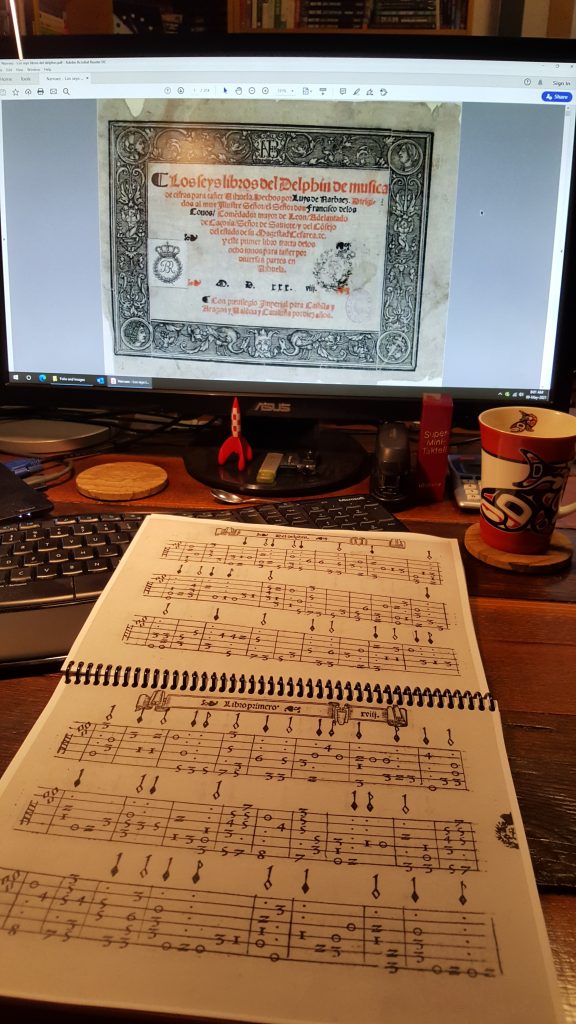 PS. The small rocket ship is a figurine based on the Tintin books “Destination Moon” and “Explorers on the Moon”. The silver coffee spoon is a Dutch tradition and this spoon was given to me when I was just one year old and is expected to last my lifetime. The Canadian art on the mug is a salmon by artist Jamie Sterritt. And yes, I still us a mechanical metronome from when I first started learning classical guitar.
Update as of June 4, 2021 — Two books of arrangements of Narváez’s music are now complete and available (click on an image below to see an expanded view).
Update as of June 16, 2021 — Third book of arrangements, with lyrics, of Narváez’s music is now complete and available (click on an image below to see an expanded view).
PS. The small rocket ship is a figurine based on the Tintin books “Destination Moon” and “Explorers on the Moon”. The silver coffee spoon is a Dutch tradition and this spoon was given to me when I was just one year old and is expected to last my lifetime. The Canadian art on the mug is a salmon by artist Jamie Sterritt. And yes, I still us a mechanical metronome from when I first started learning classical guitar.
Update as of June 4, 2021 — Two books of arrangements of Narváez’s music are now complete and available (click on an image below to see an expanded view).
Update as of June 16, 2021 — Third book of arrangements, with lyrics, of Narváez’s music is now complete and available (click on an image below to see an expanded view).
- Recordings by Performers
The audio and/or video files posted on YouTube and SoundCloud are great for analyzing and practising but have several challenges and limitations, namely the sound generated by the software which is not close to sounding like a ukulele, the slow speeds chosen to allow you to practice by playing along which makes the music sound plodding in some cases, and the total lack of performance dynamics (tempo, volume, part differentiation, phrasing, strum versus block chords, etc).
Here are some references to recordings by world-class performers to help guide you.
Here are some recordings of Renaissance music by vihuela and lute performers that have inspired my arrangements:
Performer Instrument Album Composers Featured Label Jose Antonio Escobar Vihuela El Maestro, Libro 1 (1536) Milán Naxos Ralph Maier Vihuela The Art of the Vihuela Narváez, Mudarra, Milán, Fuenllana, Daza, Valderrabano Private Christopher Wilson Vihuela Music for Vihuela Milán, Narváez Naxos Early Music Christopher Wilson, Shirley Rumsey Lute Lute Music – Fantasias, Ricercars and Duets Milano Naxos Early Music Christopher Wilson, Shirley Rumsey Lute Lute Music Johnson (John) Naxos Early Music Christopher Wilson, Shirley Rumsey Lute Pavans and Galliards Holborne, Robinson Naxos Early Music Nigel North Lute The Prince’s Almain Johnson (Robert) Naxos Robert Barto Lute Solo Works for Lute Hagen Naxos Christopher Wilson Lute Lute Music – Ricercars, Intabulations, Dances Dall’Aquila, Da Crema Naxos Early Music Shirley Rumsey Lute Music of the Italian Renaissance Arcadelt, Azzaiolo, Milano, Cara, Dalza, Caprioli, Capirola, Spinacino, Tromboncino, Aquila, Despres, Borrono, Nola Naxos Early Music Marco Pesci Lute Renaissance Lute Music Liuto, Palestrina, Lasso, Rore Naxos Shirley Rumsey Lute Music of the Spanish Renaissance Uppsala, Daza, Narváez, Fuenllana, Milán, Pisador, Morlaye, Mudarra, Valderrabano Naxos Early Music Christopher Wilson, Shirley Rumsey Lute Early Venetian Lute Music Dalza, Spinacino, Bossinensis, Capirola Naxos Early Music Nigel North Lute John Dowland Lute Music (Volumes 1 to 4) Dowland (John) Naxos Marc Lewon & Paul Kieffer & Grace Newcombe Plectrum Lute & Voice Two Lutes with Grace (Plectrum Lute Duos of the Late 15th Century) Agricola, Bedyngham, Dalza, Des Prez, Frye, Ghiselin, Ghizeghem, Roelkin, Spinacino, Tinctoris Naxos Early Music Here are some recordings of Baroque music by lute and other performers that have inspired my arrangements:
Performer Instrument Album Composers Featured Label Nigel North Lute Bach on the Lute (Volumes 1 to 4) Bach Linn Records Yasunori Imamura Baroque Lute Complete Works for Lute Bach Naxos Robert Barto Baroque Lute Weiss Sonatas for Lute (Volumes 1 to 11) Weiss Naxos Danijel Cerovic Guitar Works for Lute … arranged for guitar Weiss Naxos Jeffrey McFadden Guitar Cello Suites (Volume 1) … arranged for guitar Bach Naxos For your information, I own every CD in the Naxos Guitar Collection (most of them produced by Norbert Kraft) and Naxos Laureate Series for Guitar. Of course, I have recorded music from Segovia (who I saw in concert in Washington DC in 1980), Yepes and others, as well as recordings by every one of my teachers/leaders (Beauvais, Mahon, Maier, Visscher, Arnold, Bradley) at the Royal Conservatory of Music (Toronto), the Mount Royal Conservatory of Music (Calgary) and the Asylum for Art (Calgary).
- Working on music by Luys MilánHave started arranging the works of Luys Milán (Luis Milán, Luis de Milán) starting with seven Fantasia, all six of the Pavana and a Tento (Tiento).I am arranging the pieces so that you do not have to re-tune as the original pieces written for vihuela require a tuning down of the third string by half a tone on ukulele from C to B (on guitar from G to F#). As the vihuela has 6 string courses, there is harmonic analysis required as the ukulele only has 4 strings.Here’s what my workspace looks like while I’m arranging music (in this photo, a villancico by Luys Milan from 1536). I try to work from the original folio as shown (El Maestro is 200 pages long). I also try the fingering on my ukulele (not in the photo as it’s hung around my neck) and adjust the arrangement or put in some fingering tips. Yes, I have an old fashioned mechanical metronome which I’ve used for decades. It takes from 1 to 4 hours per page of music, depending on the complexity. I’m happy to answer any questions you may have about this process … the software you see is MuseScore.El Maestro was printed in December 1536. It is the first collection of vihuela music in history, and was in part intended for students of the instrument, with scores presented in grades from simple to complex so that vihuelists could proceed from elementary to harder pieces.
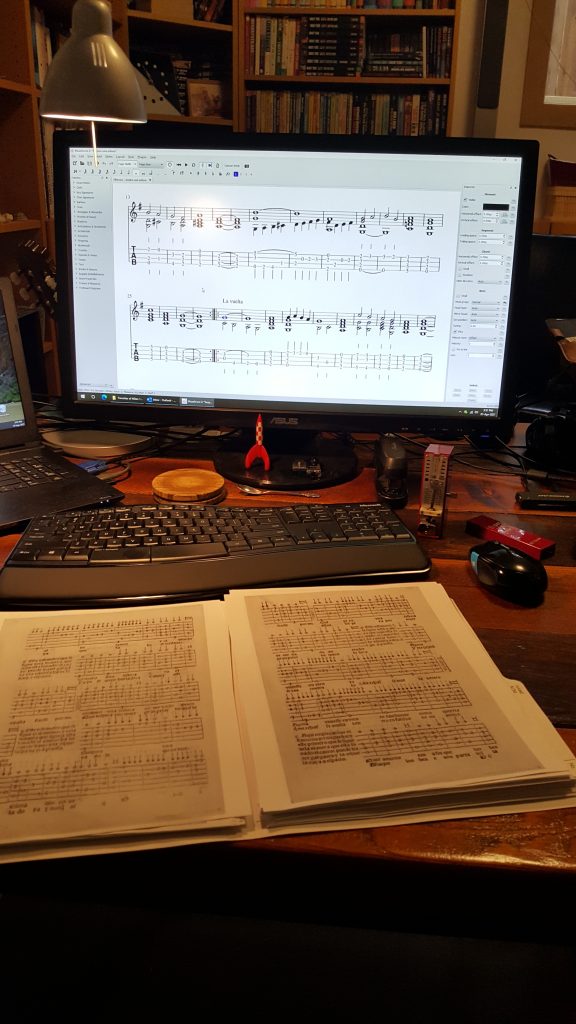 PS. The small rocket ship is a figurine based on the Tintin books “Destination Moon” and “Explorers on the Moon”. The silver coffee spoon with my initial R on it is a Dutch tradition and this spoon was given to me when I was just one year old and is expected to last my lifetime.
Update as of May 8, 2021 — Four books of arrangements of Milan’s music are now complete and available (click on an image to see an expanded view) …
PS. The small rocket ship is a figurine based on the Tintin books “Destination Moon” and “Explorers on the Moon”. The silver coffee spoon with my initial R on it is a Dutch tradition and this spoon was given to me when I was just one year old and is expected to last my lifetime.
Update as of May 8, 2021 — Four books of arrangements of Milan’s music are now complete and available (click on an image to see an expanded view) …
- What’s Next – Renaissance music
There is literally a ton of music by Renaissance composers for the guitar, vihuela, lute and other stringed instruments (e.g. cittern and bandora).
So far, I’ve arranged most of the guitar music (Renaissance guitar that is) of:
- Adrian Le Roy (ca 1520 – 1598)
- Guilluame Morlaye (ca 1510 – 1558)
- Gregoire Brayssing (flourished 1547 – 1560)
- Simon Gorlier (flourished 1550 – 1584)
- Jacques Arcadelt (ca 1507 – 1568)
- Alonso Mudarra (ca 1510 – 1580)
- Miguel de Fuenllana (ca 1500 – 1579)
The music of these composers are in surviving printed music books which have been scanned and are available online. Images of the book covers and samples of the original music are included in the books of arrangements for ukulele that I have prepared (the arrangements are based on the original tabulature rather then guitar arrangements by others to avoid transcription issues).
While exploring other composers to arrange for ukulele, I am researching mainly vihuela and lute music. The Renaissance guitar had only a short period of popularity in the 16th century and it was overtaken by the Baroque guitar which was larger and had an extra string for a broader range of music and richer sound and resonance (which was then supplanted by the Romantic guitar and then by the modern classical guitar). The lute and vihuela have more strings (6 or more) and are tuned differently (e.g. G tuning on the vihuela with the third string tuned to F#, or later with Dm tuning for lutes in the Baroque era). The ukulele arrangements need to have adjusted bass notes, harmonics and key signatures in order to accommodate the 4-stringed ukulele with C tuning. Alternatively, a capo can be used to adjust the key signature. For example, if you strum the open strings on a ukulele, you are playing a C6 chord. If you strum the top four strings on a modern classical guitar, you are playing a G6 chord which becomes a C6 chord if you put a capo on the 5th fret.
So far, I have researched composers and/or original folios for the following Renaissance composers (see images of some of the book covers at the end of this post):
- Luis de Narváez (ca 1490 – 1547) – published book in six volumes for vihuela
- Francesco da Milano (ca 1494 – 1543) — four published books for vihuela
- Luys Milan (ca 1500 – 1562) — published book for vihuela (El Masetro)
- Miguel de Fuenllana (ca 1500 – 1579) — published book in six volumes for vihuela (with 9 guitar pieces)
- Alonso Mudarra (ca 1510 – 1580) — published book in three volumes for vihuela (with 7 guitar pieces)
- John Johnson (ca 1545 – 1594) — various lute books (e.g. Mathew Holmes)
- Anthony Holborne (flourished 1584 – 1602) — various books for lute, cittern, etc.
- Thomas Robinson (flourished 1589 – 1609) — various lesson books for lute, cittern, bandora, etc.
There are literally hundreds of pieces of music that can be arranged for ukulele. However, I do not plan to tackle them all and would like feedback on where to concentrate effort. For example, the six pavans by Milan are quite famous and I have already arranged two of them for solo ukulele and all six of them for ukulele quartet. Please comment on this post to let me know your thoughts. Much appreciated!
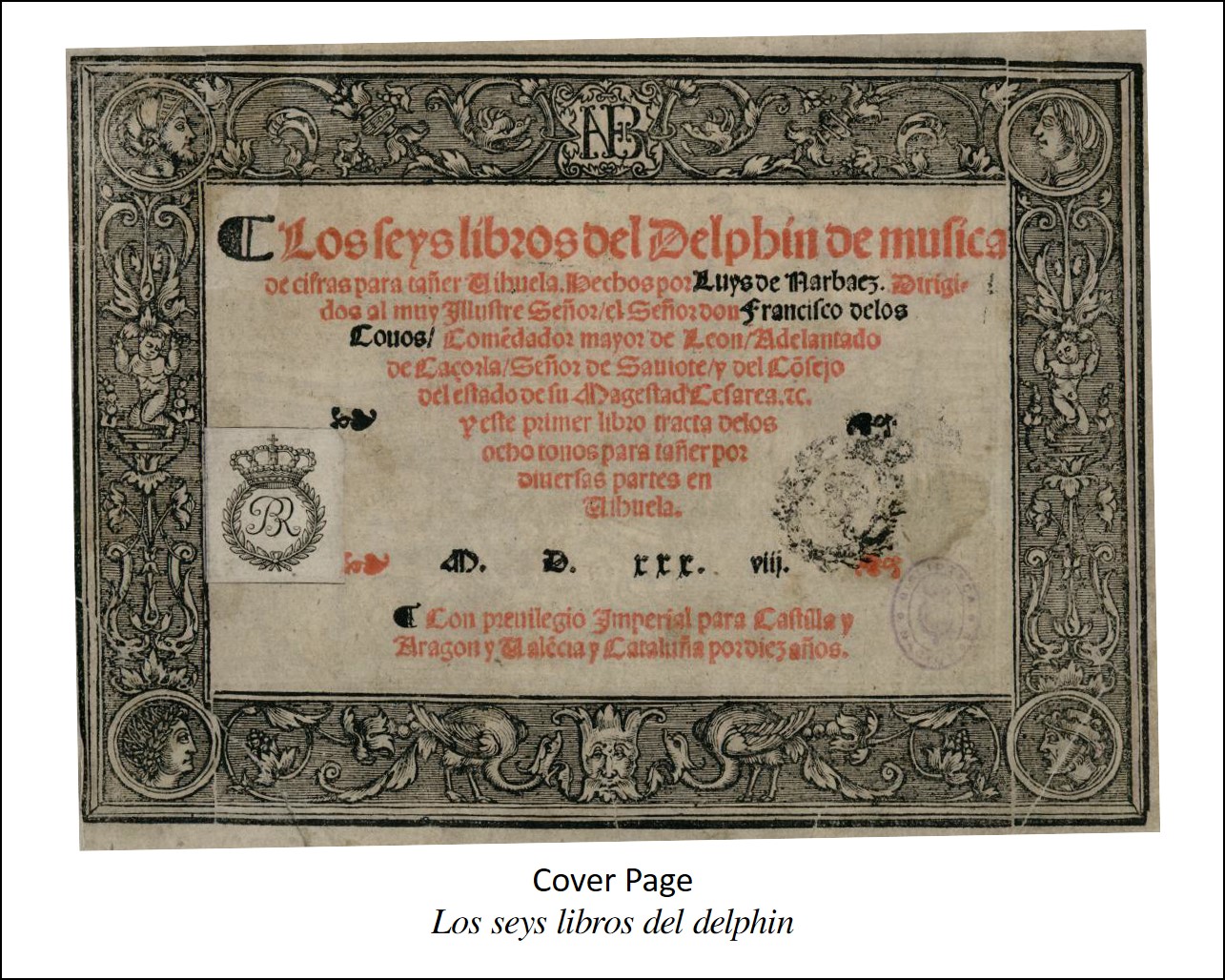
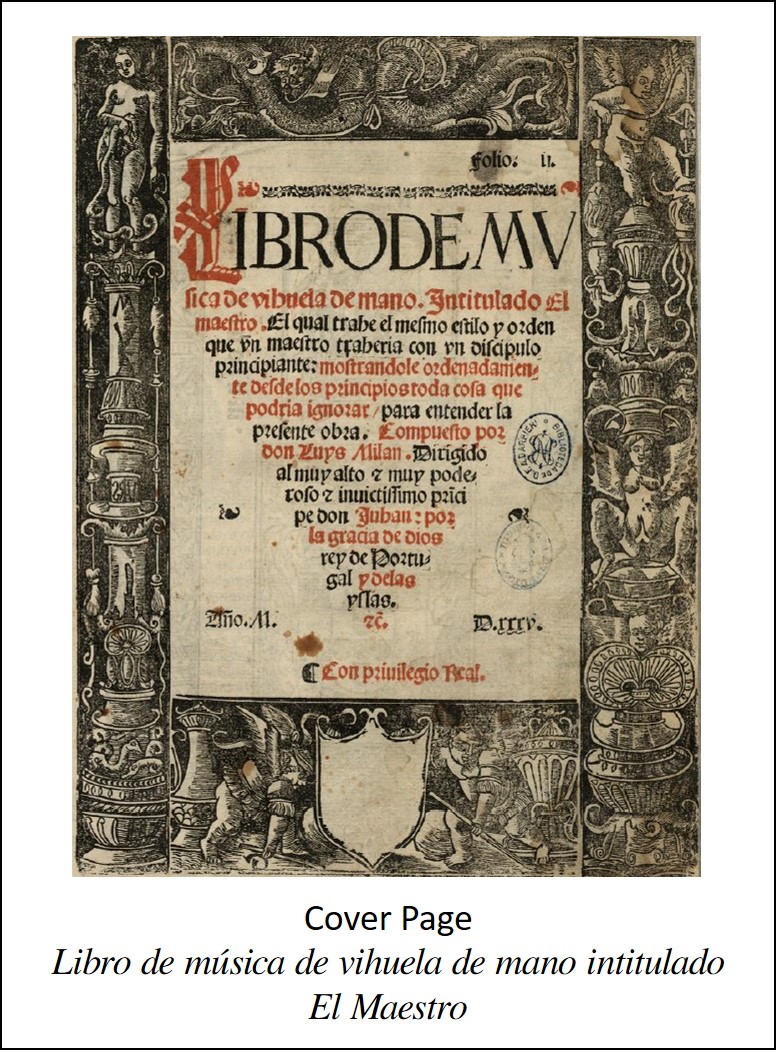
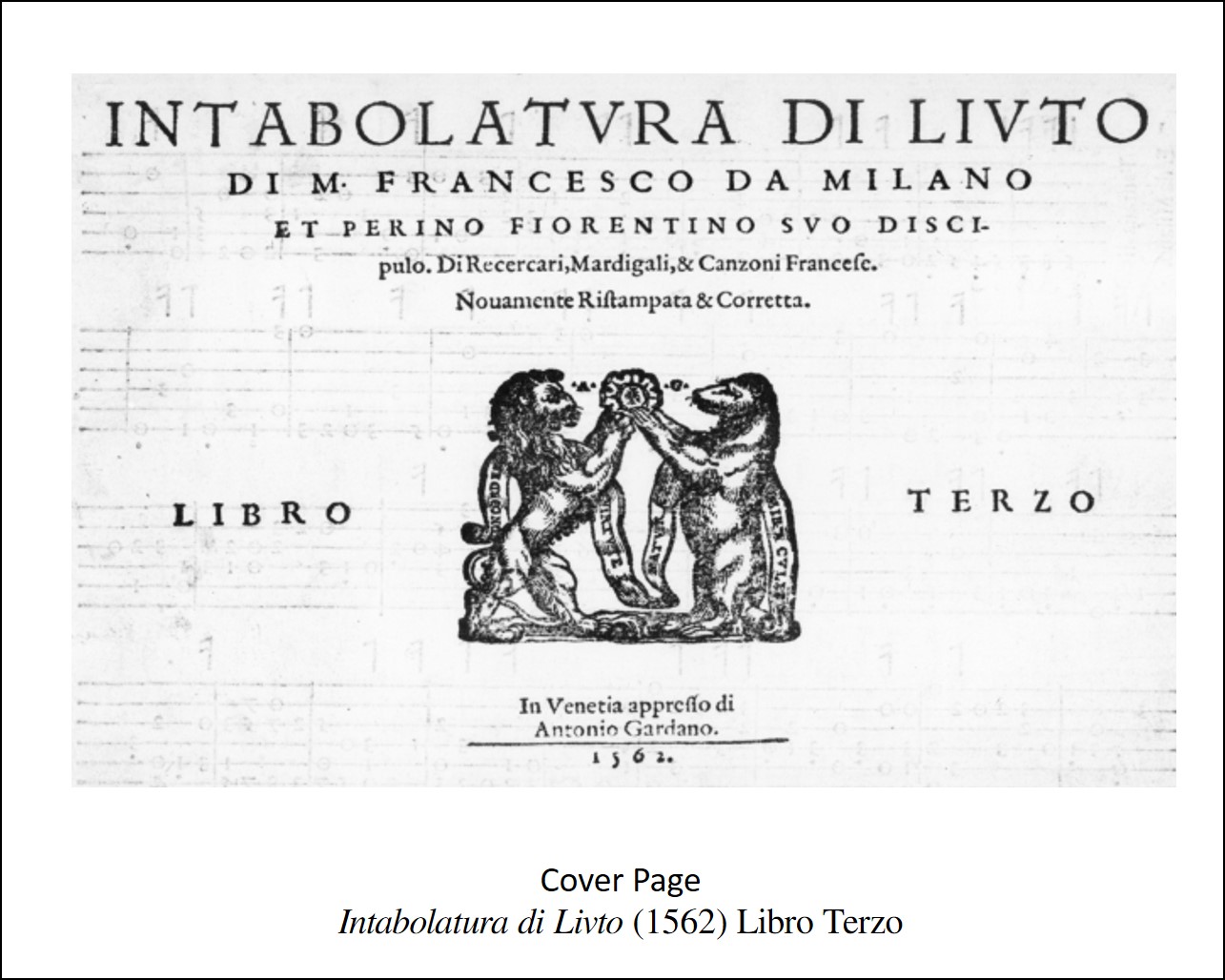


- Alonso MudarraThe six guitar pieces by Alonso Mudarra (ca 1510 – 1580) are now arranged and ready for you to view (go to the YouTube channel to see them).
One of the fantasies is in non-standard tuning labelled “viego” or old tuning where the lowest string is tuned down a whole tone. The remaining pieces are in standard tuning labelled “nuevo” or new tuning. All the original pieces are in Italian tabulature ((which is upside down to our modern tab) and, while I’m getting used to reading it, I still have to turn the original folio upside down and read it backwards to proofread the arrangements. After working with original folios by various composers for over three years, I’m also “seeing the music” in the tabulature (i.e. separate voices and melodic lines), especially in pieces with some structure like the Pavana and Romanesca by Mudarra. Enjoy!
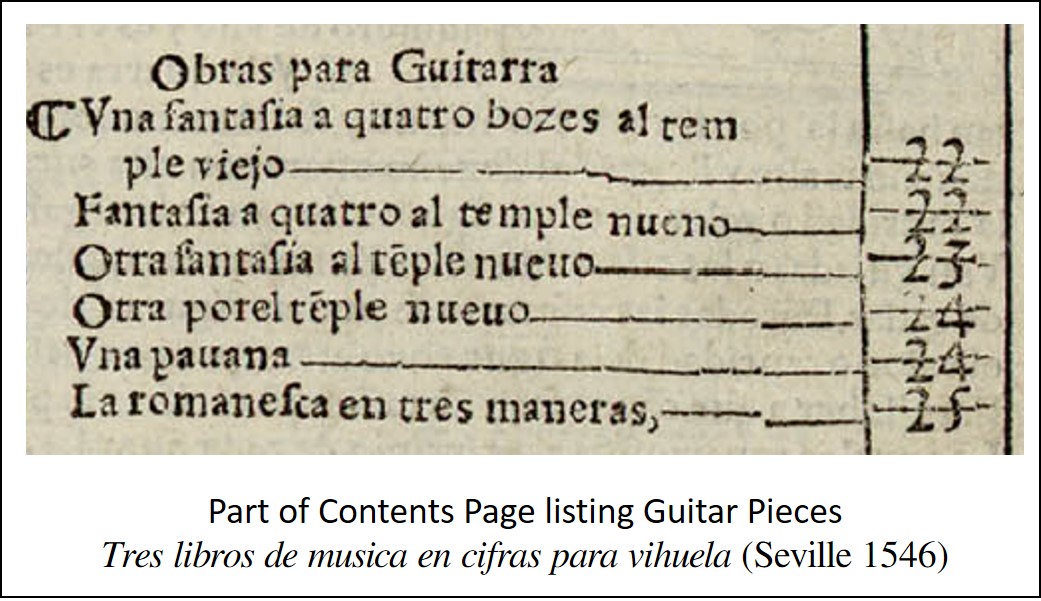
- Miguel de FuenllanaThe nine guitar pieces by Miguel de Fuenllana (ca 1500 – 1579) are now arranged and ready for you to view (go to the YouTube channel to see them).
Here is a sample of the original music (one of the Fantasies). Remember that this is Italian tabulature (i.e. read it upside down) …


- Mudarra & FuenllanaIn searching for music to arrange from the Medieval, Renaissance or Baroque eras, there is a plethora of pieces written for lute, vihuela, and guitar (both Renaissance and Baroque guitars). This music takes advantage and recognizes the characteristics and limitations of these stringed instruments, such as the sound starting to fade immediately after plucking a string. Music written for the lute, vihuela and Baroque guitar require additional changes when arranging the music for modern ukulele, as these instruments have 5 or 6 strings while the ukulele has only 4 strings. The most straightforward to arrange is music written for Renaissance guitar as the string arrangements and tuning is much the same as the modern ukulele (read more details in this post). However, there is a limited amount of surviving music written specifically for the Renaissance guitar, such as the nine surviving books published by Adrian Le Roy and Guillaume Morlaye in Paris in the 1550’s. There are only two other surviving sources of such music, but they are included as a small selection of pieces in larger works written for vihuela. They are: Tres libros de musica en cifras para vihuela (“Three books of music in numbers for vihuela”), which was published on December 7, 1546 in Seville by Spanish composer Alonso Mudarra (ca 1510 – 1580). Only 6 of the pieces are written for the Renaisance guitar in the first book (Libro I). Libro de música para vihuela intitulado Orphenica Lyra (“Book of music for vihuela ….”), which was published in 1554 in Seville, known briefly as Orphenica Lyra, with 182 pieces in six volumes by Spanish composer Miguel de Fuenllana (ca 1500 – 1579). Only 7 of the pieces are written for the Renaissance guitar in the sixth book (Libro VI). I am arranging these 13 pieces for the ukulele (as illustrated below) and they should be completed in February or March 2021. I will be posting the arrangements so you can preview and enjoy these pieces as I complete them. To receive notifications of each posting, you should subscribe to the YouTube channel.
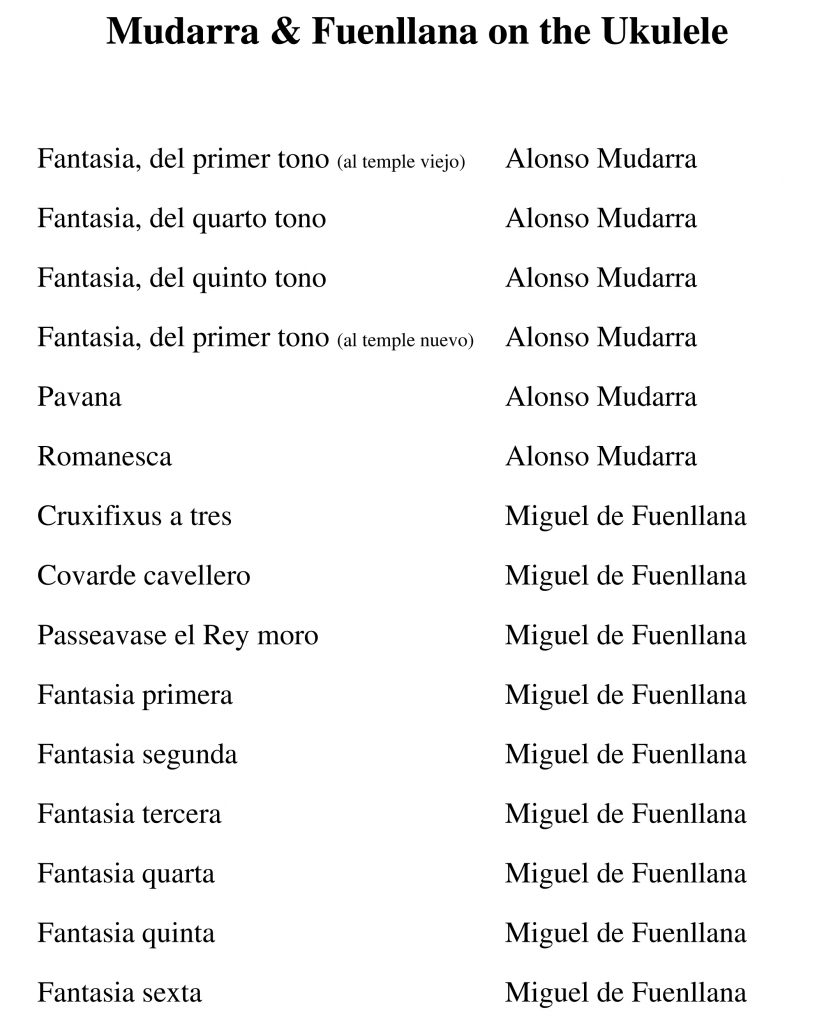
- Renaissance TabulatureMusic for guitar, vihuela and lute was written using tabulature in the Renaissance and Baroque eras (modern spelling tablature or TAB for short), however, it was not consistent. The conventions used by the French, Italians or Spanish differed, composers used hybrid methods and some ventured into alternate tunings (oh my!). The illustrations used below are pieces for guitar or vihuela as both instruments were popular in the Renaissance.
French Tabulature
French tabulature was used in the publications from Le Roy and Morlaye from Paris in the 1550’s as shown …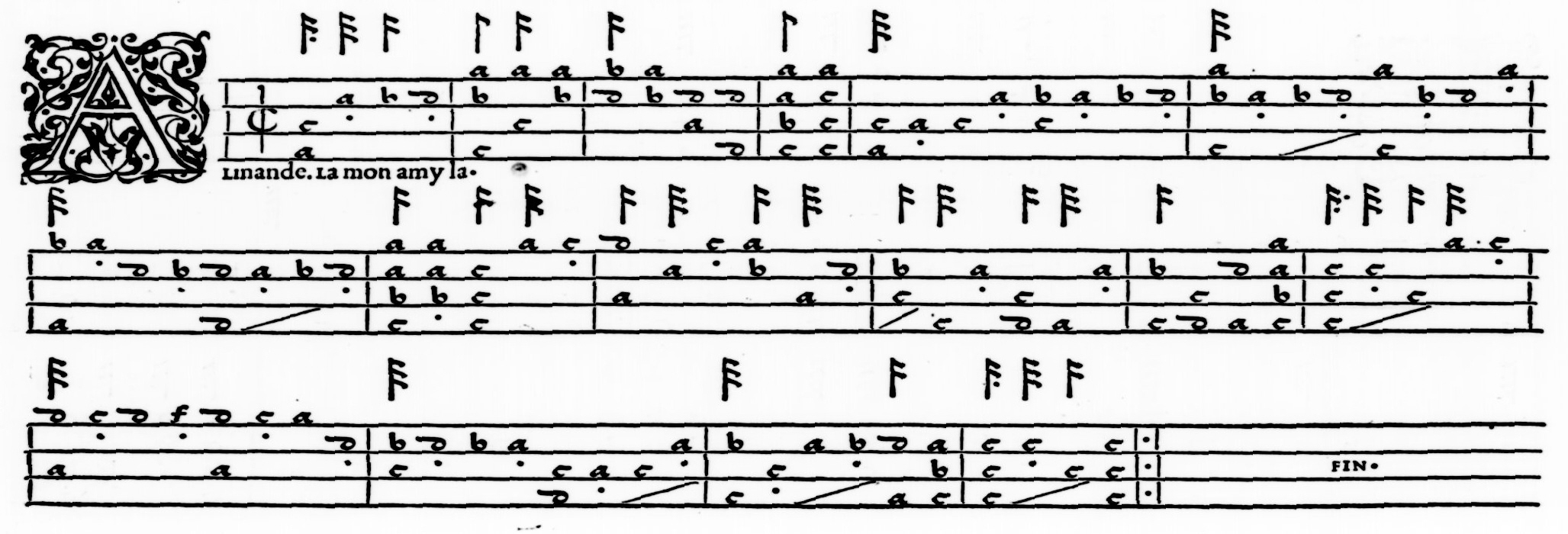 To read this, the top line of the score represents the highest sounding or A string on the Renaissance guitar (or ukulele) and the bottom line corresponds to the lowest sounding or G string. Letters are used to indicate which fret to use to play the note with “a” representing an open string, “b” is the first fret, “c” is the second fret, etc. This is somewhat confusing at first but it soon becomes second nature when reading the score. The duration of the note is indicated by the stem above the score with one “tail” representing a quarter note (in “cut” time or 2/4 time), two “tails” an eighth note, etc. (and a dot indicating to hold the note for 50% longer).
This matches what we use for tabulation in modern scores, except that we use numbers instead of letters for the frets, as shown (this is the full modern score of the music illustrated above) …
To read this, the top line of the score represents the highest sounding or A string on the Renaissance guitar (or ukulele) and the bottom line corresponds to the lowest sounding or G string. Letters are used to indicate which fret to use to play the note with “a” representing an open string, “b” is the first fret, “c” is the second fret, etc. This is somewhat confusing at first but it soon becomes second nature when reading the score. The duration of the note is indicated by the stem above the score with one “tail” representing a quarter note (in “cut” time or 2/4 time), two “tails” an eighth note, etc. (and a dot indicating to hold the note for 50% longer).
This matches what we use for tabulation in modern scores, except that we use numbers instead of letters for the frets, as shown (this is the full modern score of the music illustrated above) …
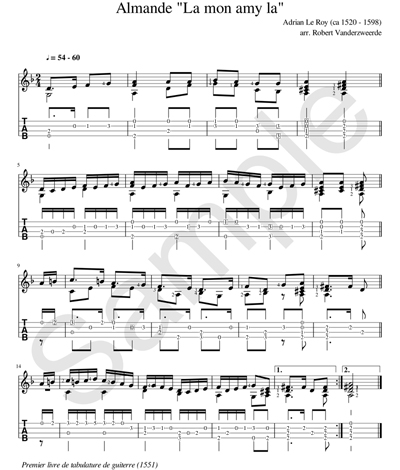 Here’s another example of this style of tabulature (it’s the music for “Greensleeves”) …
Here’s another example of this style of tabulature (it’s the music for “Greensleeves”) …
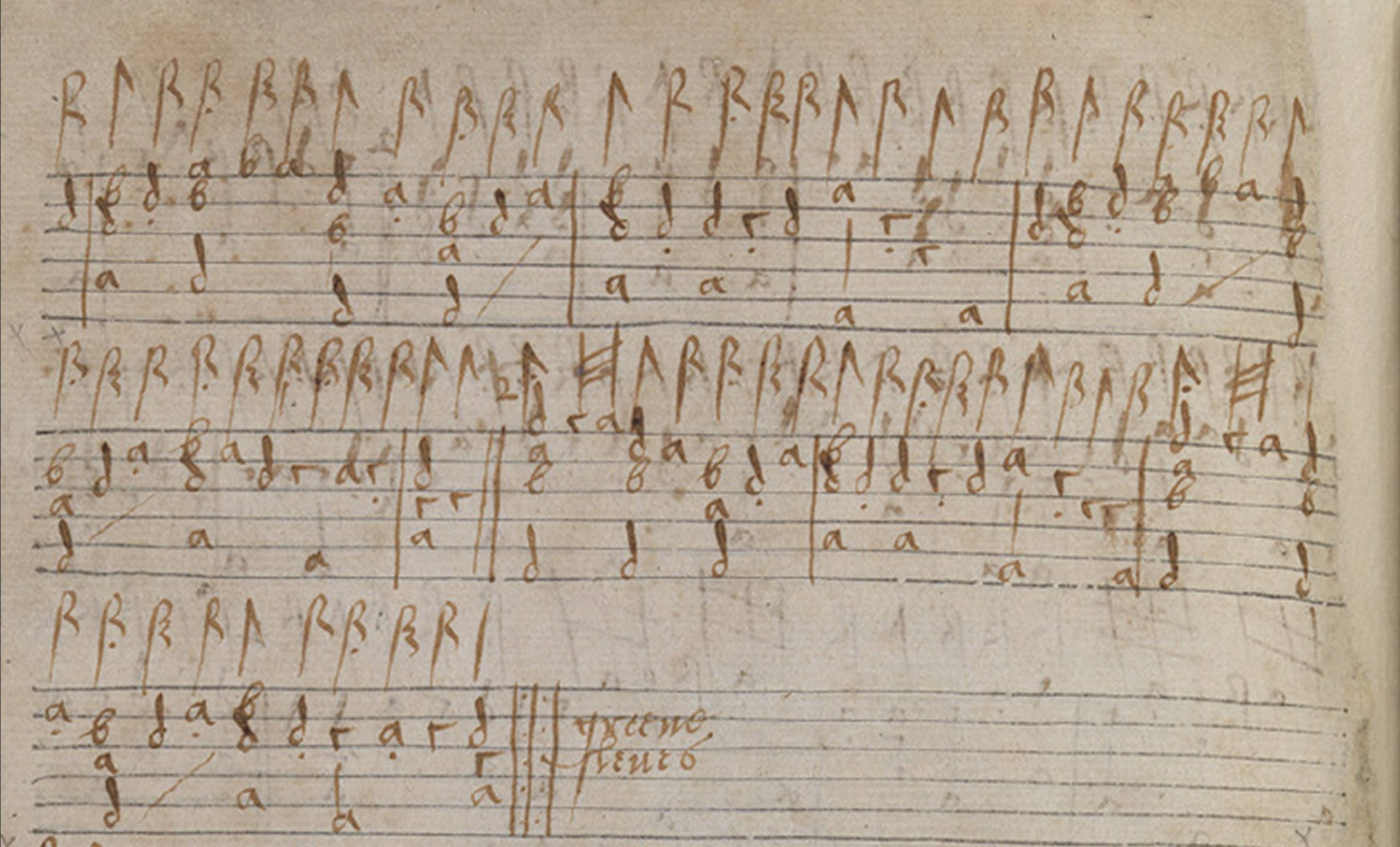
Italian Tabulature
Italian tabulature was used by Spanish composers Mudarra, Fuenllana and others in the 16th century in music for the vihuela and Renaissance guitar as shown … It almost looks like modern tabulation in that is uses numbers to represent the frets (zero for an open string, “1” for the first fret, “2” for the second fret, etc.) The only difference from modern tabulation is that it is “upside down” in that the bottom line on the score represents the highest sounding or A string on the Renaissance guitar (or ukulele) and the top line corresponds to the lowest sounding or G string. For modern players, this takes some getting used to, especially if you switch between different scores. The duration of the notes are above the staff and look like our modern notes (whole notes, half notes, quarter notes), including dotted notes.
Here the first line of the same score using modern notation and tabulation …
It almost looks like modern tabulation in that is uses numbers to represent the frets (zero for an open string, “1” for the first fret, “2” for the second fret, etc.) The only difference from modern tabulation is that it is “upside down” in that the bottom line on the score represents the highest sounding or A string on the Renaissance guitar (or ukulele) and the top line corresponds to the lowest sounding or G string. For modern players, this takes some getting used to, especially if you switch between different scores. The duration of the notes are above the staff and look like our modern notes (whole notes, half notes, quarter notes), including dotted notes.
Here the first line of the same score using modern notation and tabulation …

Hybrids
While the Italian method was used for most Spanish composers at the time, Milan’s publication “El Maestro” in 1536 reversed the order of the lines (like French tabulature) but continued to use numbers for the frets and note durations (like Italian tabulature) as shown in this illustration of music for vihuela …
Alternate Tuning
There are alternate tunings available for the strings (e.g. tuning the lowest or fourth string down a whole tone from G to F on a Renaissance guitar or ukulele). This is usually noted at the beginning of the piece. In the original music, you may see a note such as “a chorde auallée” which means to use alternate tuning. In modern music, it is either written out in detail or written in short form, such as ④ = F at the start of the piece.Modern Tablature (TAB) and Notation
Modern tablature is a mix of French tabulature (i.e. ordering of the lines on the staff and using stems above or below the staff to represent the note length) and Italian tabulature (i.e. using numbers to represent the frets). Often, when a piece has both notation and tablature or TAB, the note durations are omitted on the TAB lines. It is up to the player to read both lines simultaneously (i.e. the TAB lines for the string/frets and the notes lines for the duration). In the arrangements that I create, I include the note durations on the TAB lines to make it easier to read/play. Of course, modern musical scores have key signatures for the notes but notice that the tablature or TAB lines in the same scores above do not show a key signature as it’s not needed when reading TAB. This makes it challenging to translate the original Renaissance tabulature back into modern musical notation as the key is not shown. In fact, the original music often moves modally between different keys or ends on a Picardy third (i.e. ending on a major chord while the rest of the piece is in a minor key, as you may notice in the “Almande” illustrated above). The keys in the modern musical scores above are chosen for the ukulele, not for the modern classical guitar which is used in most of the transcriptions that are available. Fingerings (i.e. which finger to use to play a note on the fretboard) are never shown in the tablature line in either original or modern scores. It is often up to you, the player, to work that out. Recommended fingerings are sometimes indicated but only shown on the notation lines in modern scores as a small number beside the note. Finally, when reading the notes, there are sometimes instructions on which position to use (e.g. VII for seventh position or to play a barre chord on the seventh fret) or alternate strings (e.g. ② to indicate that the note should be played using the second string), neither of which is needed when reading tablature or TAB. I invite you to experiment reading the various styles of tabulature or tablature/TAB. Enjoy! - Troves of Troves
If you love Renaissance guitar music, there are now five troves of 16th century music available to play on the ukulele, Renaissance guitar, etc.



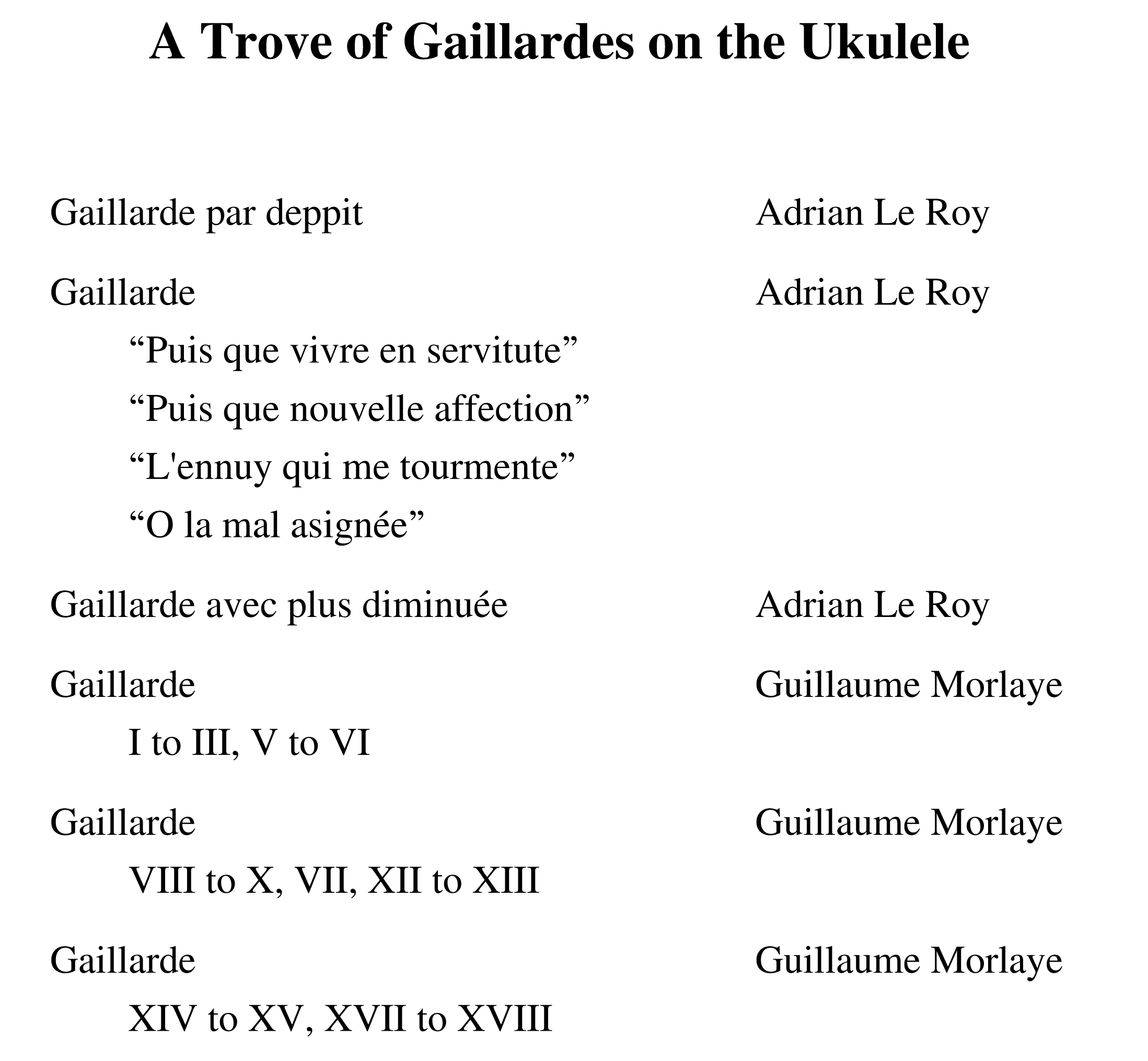
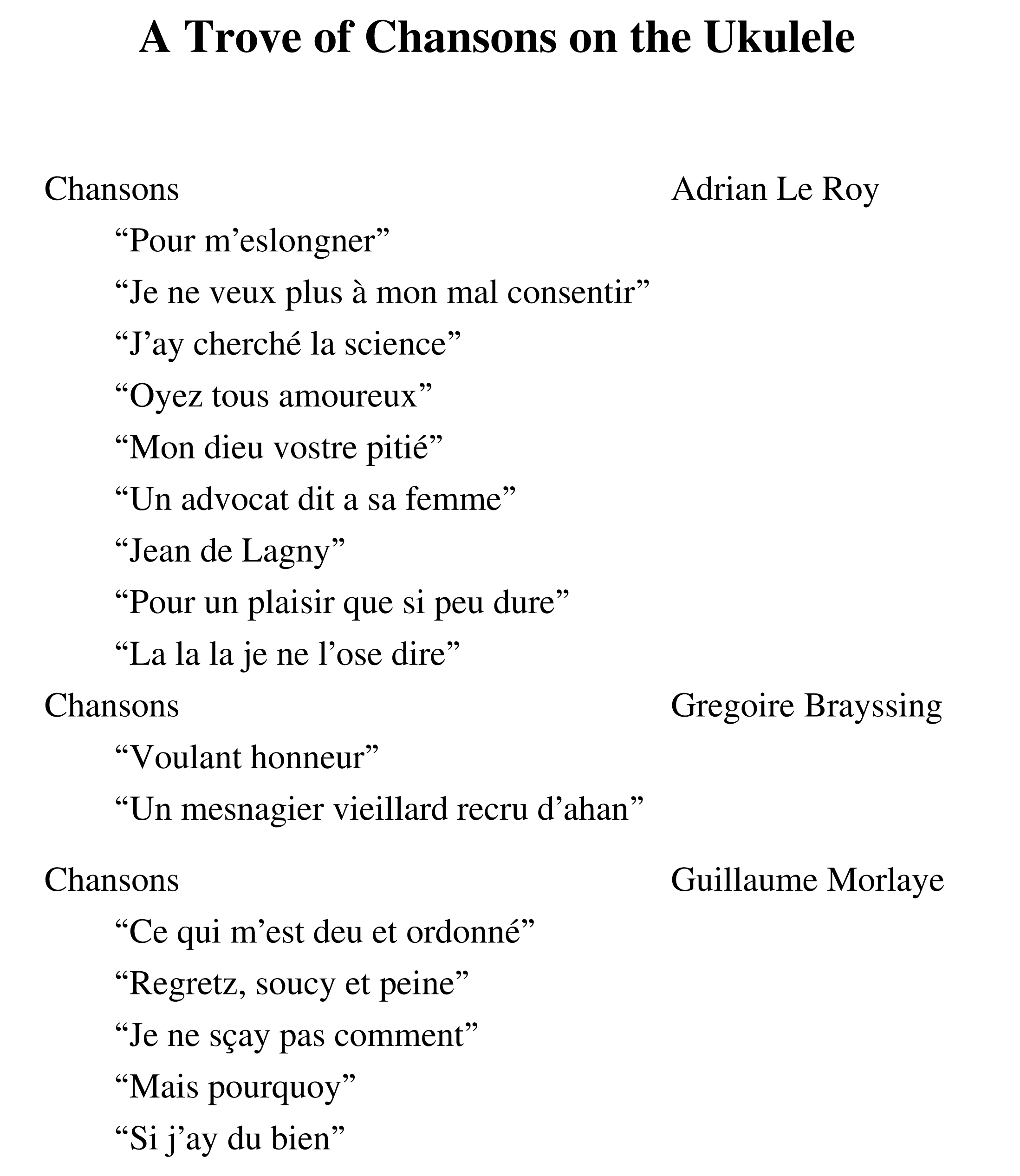
Click on an item to view a larger imageTrove of Fantasies: A fantasia or fantasie is a musical composition with its roots in the art of improvisation. The term was first applied to music during the 16th century, at first to refer to the imaginative musical “idea” rather than to a particular compositional genre. Its form and style consequently ranges from the freely improvisatory to the strictly contrapuntal, and also encompasses more or less standard sectional forms (i.e. it sometimes but doesn’t always follow the “rules”). Read more. Listen.
Trove of Bransles: The name branle (or bransle) derives from the French verb branler (to shake, wave, sway, wag, wobble) and is a type of French dance popular from the early 16th century to the present. The term also refers to the music and the characteristic step of the dance. The branle was danced by a chain of dancers, usually in couples, with linked arms or holding hands. The dance alternated a number of larger sideways steps to the left (often four) with the same number of smaller steps to the right so that the chain moved gradually to the left. Read more. Listen.
Trove of Pavanes: The pavane is a slow processional dance common in Europe during the 16th century. The decorous sweep of the pavane suited the new more sober Spanish-influenced courtly manners of 16th century Italy. It appears in dance manuals in England, France, and Italy. It has a slow duple metre with two strains of eight, twelve, or sixteen bars each. The pavane’s popularity was from roughly 1530 to 1676. As a musical form, the pavane survived long after the dance itself was abandoned, and well into the Baroque period. Read more. Listen.
Trove of Gaillardes: The gaillarde or galliard was a form of Renaissance dance and music popular all over Europe in the 16th century. It is mentioned in dance manuals from England, France, Spain, Germany, and Italy. It is an athletic dance, characterised by leaps, jumps, hops and other similar figures in a series of choreographed patterns of steps. After the dance fell out of popular use and, in musical compositions, the galliard often filled the role of an after dance written in 3 or 6, which followed and mimicked another piece (sometimes a pavane) written in 2 or 4. Read more. Listen.
Trove of Chansons: Chansons are songs. The earliest chansons were for two, three or four voices, with first three becoming the norm, expanding to four voices by the 16th century. The Parisian Chansons began in 1520 and were lighter and chordal with melodies in the upper most line. Sometimes, the singers were accompanied by instruments, often lutes. The general subject matter was courtly love. Read more. Listen.
- Free ArrangementsAdditional arrangements of Renaissance music are now available for you to download and enjoy over the holidays for free. Go to the website and click on “Free” to access the music, historical notes and recordings. They range from a demi-basse dance, to conte clares, a prelude, a gaillarde and a series of chansons. All the pieces are from the nine books published by Adrian Le Roy and Guillaume Morlaye in the mid-16th century and were specifically written for the Renaissance guitar, the direct ancestor of the ukulele (i.e. the same tuning).
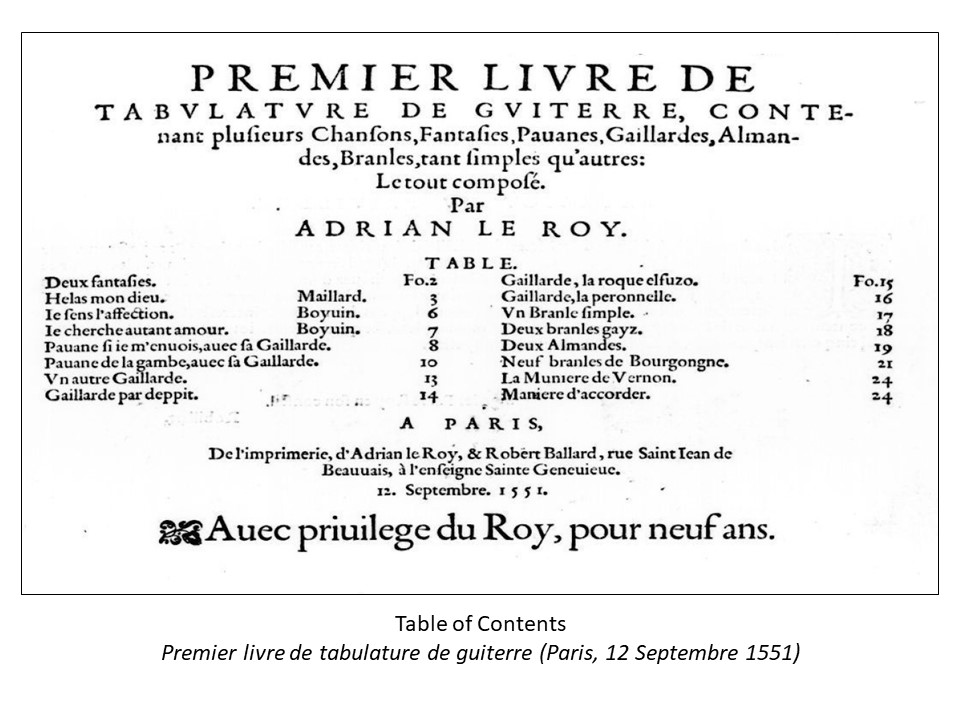 I am making these arrangements available for free as I go through the nine books to arrange the remaining pieces into a series of books, called “Troves”, for dozens of Fantasies, Bransles, Pavanes, Gaillardes and Chansons (available in 2021).
I am making these arrangements available for free as I go through the nine books to arrange the remaining pieces into a series of books, called “Troves”, for dozens of Fantasies, Bransles, Pavanes, Gaillardes and Chansons (available in 2021). - Recitals and Suites
As a classical music player (on guitar and ukulele) and with the help of my teachers, I select pieces that compliment each other and create a mini-suite or recital. The selected pieces are not necessarily connected to each other formally by the composer and do not have to be by the same composer either. They just need to work together with some commonality. For example, pairing etudes from Gerald Garcia with those of Leo Brouwer. If working from a book of studies, etudes, or short pieces usually by the same composer, then several of the pieces are selected to create my own suite or recital.
My teachers also help me select formal suites or sonatas that I work to learn completely. The guitar ensemble also selects pieces with multiple movements for performance or pieces by the same composer from a larger body of work.
I’ve put together three books that follow these principles. If there is interest, I can create more (just let me know what you’d like).
A Military Recital — While arranging Renaissance guitar music, I noticed several lengthy pieces with a military “theme”. They are either descriptive pieces depicting a particular battle or dance pieces incorporating military-type passages. I also included a transcription of a Baroque piece (originally written for harpsichord). Listen now.
A Spanish Recital — As a student of the guitar, I learned the Spanish Suite arranged by John Mills based on the music of Gaspar Sans. Inspired by this concept, I researched and found a lot of music Gaspar Sans and selected ten pieces to create a recital for the ukulele. Listen now.
Sonata 24 by Weiss — I’ve played portions of this sonata on the guitar and was inspired to challenge myself and arrange the entire 8-movement sonata for ukulele. The original music is in the key of D-Minor and has been transposed to the key of G-Minor for the ukulele so as to preserve as many of the fingerings as possible. Also, some passages have been simplified, including using different bass lines or notes, especially since the ukulele only has four strings and the pieces were originally written for the lute. Listen now.
- About the arranger, Robert VanderzweerdeFor those of you curious about my name and heritage …Yes, it is Dutch and I was born in Amsterdam. It’s really spelled “van der Zweerde” but my parents changed it when they emigrated to Canada when I was only 3 and my sister wasn’t yet 2 years old. The rest of the family (grandparents, aunts/uncles) also emigrated within a couple of years.While my first language is Dutch, the entire family switched to English so I speak Dutch at the level of a 3 year old, cannot read the language (unless I sound it out) and can understand about 75% when it’s spoken to me. Every time I fly to/through Schiphol on KLM, I get asked if I still speak the language at customs (in Dutch of course) and I have to explain what happened.I learned English history and never knew about the Dutch involvement with the Spanish Armada until my parents explained. My mother taught me “Piet Hein” and about De Zilvervloot (the Silver Fleet) and I still sing it at family gatherings, both in Dutch with an English accent and a poetic translation in English for the next generation of the family born in Canada.I am a mathematician so music is a natural love of mine. It’s been a part of my entire life and now my main focus after retiring from a career in technology. While guitar is my first instrument (both folk and classical), ukulele and period instruments are my latest adventures.This is me before leaving The Netherlands and boarding the plane to Montreal, Canada with my mom and sister.


- Favorites of the FavoritesWith 16 books completed, it’s time for a book of my favorites from the Renaissance and Baroque. From the introduction … These pieces are the favorites of the arranger, Robert Vanderzweerde, for many reasons. Some are just fun to play, many will be recognized by music lovers of other genres so they become great “set” pieces when asked to demonstrate what you do and, finally, Robert performed many of these pieces while learning to play classical guitar and they have remained favorites ever since. The pieces in this book are ordered first by musical era and then by degree of difficulty, starting with those that are easier.Watch videos of the music on YouTube and/or listen to the album on SoundCloud.
- Medieval music is readyThe Medieval Ukulele is now available on Amazon and Kobo. Here are the explanations of the arrangements and links to the recordings so you can explore the music from the 5th to 15th centuries …The Estampie is the first known genre of medieval era dance music, a popular instrumental and vocal form in the 13th and 14th centuries with a succession of repeated sections. The melody in a lively triple meter is monophonic (in soprano/alto range such as a recorder). However, the melody becomes polyphonic when accompanied by instrumentalists (in tenor range such as the crumhorn). They were played as entertainment for the wealthy during their feasts. https://youtu.be/zJuUqIpr3KThe Ductia as like the estampie but more regular. “The ductia is a melody that is light and brisk in its ascents and descents, and which is sung in carole by young men and girls, …. It influences the hearts of young girls and men and draws them from vanity, and is said to have power against that passion which is called love or ‘eros’.” (Johannes de Grocheio). https://youtu.be/zHtfU9zcmuwThis piece is my favorite … Canção do figueiral (Song of the fig-tree orchard) is celebrated as the oldest traditional song in Portuguese (about 12th century). https://youtu.be/cw9O3sTO0AsMost of the arrangements in this book are of songs. People who sang the secular songs of the middle ages were jongleurs or minstrels, first appearing around the 10th century. These actors, acrobats, fiddlers and singers moved from castle to castle.A Troubadour is a composer and performer of Old Occitan lyric poetry during the High Middle Ages (1100–1350). The troubadour school or tradition spread to Italy and Spain. The texts of troubadour songs deal mainly with themes of chivalry and courtly love. Most were metaphysical, intellectual, and formulaic. Many were humorous or vulgar satires. https://youtu.be/dJFxSDy7ln8There were three Formes Fixes of verse set to music between the late 13th and the 15th centuries. Each was also a musical form, generally a chanson, and all consisted of a complex pattern of repetition of verses and a refrain with musical content in two main sections. The rondeau is believed to have originated in dance songs.Rondeau: https://youtu.be/Vg33EsgKg8gBallade: https://youtu.be/BXOLOUbWNfQVirelai: https://youtu.be/ASfyZg9e7QoA Chanson is in general any lyric-driven French song, usually polyphonic and secular. A singer specializing in chansons is known as a “chanteur” or “chanteuse”, and collection of chansons is a “chansonnier”. The earliest chansons geste were the epic poems performed to simple monophonic melodies. These usually recounted the famous deeds (geste) of past heroes, legendary and semi-historical. The chanson courtoise or grand chant was an early form of monophonic chanson, the chief lyric poetic genre of the trouvères. It was a song of courtly love, written usually by a man to his noble lover. A Burgundian chanson is a polyphonic French song of the late Middle Ages and Renaissance. The earliest chansons were for two, three or four voices, with first three becoming the norm. Sometimes, the singers were accompanied by instruments. https://youtu.be/UE4FTfIVLRQA Cantiga is a medieval monophonic song. Over 400 extant cantigas come from the Cantigas de Santa Maria, narrative songs about miracles or hymns in praise of the Holy Virgin. Derived from medieval dance forms, the 15th century Villancico was a type of popular song sung in the vernacular and frequently associated with rustic themes. With the decline in popularity of the villancicos in the 20th century, the term became reduced to mean merely “Christmas carol”. https://youtu.be/8j0Iy3-K-tQCoventry Carol was simply “Song 2” from the Pageant of the Shearmen and Tailors. It was named after the city of Coventry where theatrical performances about the theological mysteries of God’s creation were performed as early as 1392 until suppressed in 1579. https://youtu.be/siy0DaFPeKs
- Older Posts on FacebookThis blog is starting today (October 25, 2020) but there have been posts about Ancient Music for Ukulele since June 7, 2018. A selection of older posts will be re-posted on this blog page (back dated to the original post date). The remainder will be skipped but you can still view them on Facebook at www.facebook.com/ancientmusic4ukulele
- What’s Next – Medieval musicI was planning to start arranging music of the Classical and Romantic eras. The early to mid-19th century was considered “the golden age of the guitar” with many great performers who were also composers (Sor, Giuliani, Carcassi, Carulli and Aguado). This era was followed by the “dark period” (mid-19th to mid-20th century), despite great works by composers like Tarrega, when the guitar lost ground to the piano and became “old fashioned”. Of course, we all know that the classical guitar regained its status as a modern and delightful instrument and has become popular again — and, of course, the rise of the once lowly ukulele in the 21st century (if you haven’t seen it, I recommend watching the movie “Mighty Uke: The Amazing Comeback of a Musical Underdog” released in 2010).However, I’ve decided to delay that, not because there aren’t any great works (there are), but because the music of those eras sounds so wonderful on the modern classical guitar with its additional 5th and 6th strings.Instead, I’m heading in the other direction and have started arranging for an upcoming book, The Medieval Ukulele.
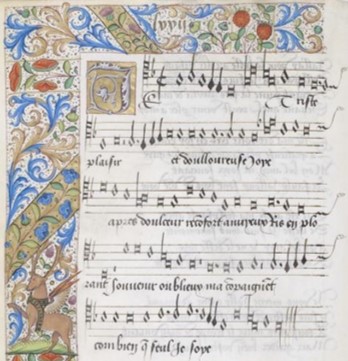
- A Branle Dance (with real dancers)I talked about imaging the dancers when arranging a Branle.You should watch one of the dances sometime — the most famous one is “Branle de l’officiel” which we know as “Ding Dong Merrily on High”. I’ve arranged this piece (it’s in the book “The Yuletide Ukulele”). Here is nice YouTube video of a group of students dancing to it. They are in costume but performing in an empty studio (you’ll have to image an appropriate setting).
- Special PromotionFrom October 1 to December 31, the two introductory books (The Renaissance Ukulele and The Baroque Ukulele) in electronic format will be offered at an introductory price of only $9.95 Canadian on Kobo … that’s a 33% discount.
- My “healed” UkuleleMy uke is healed and heading home from the hospital. Great job by Twisted Wood Guitars, based here in Alberta, Canada.
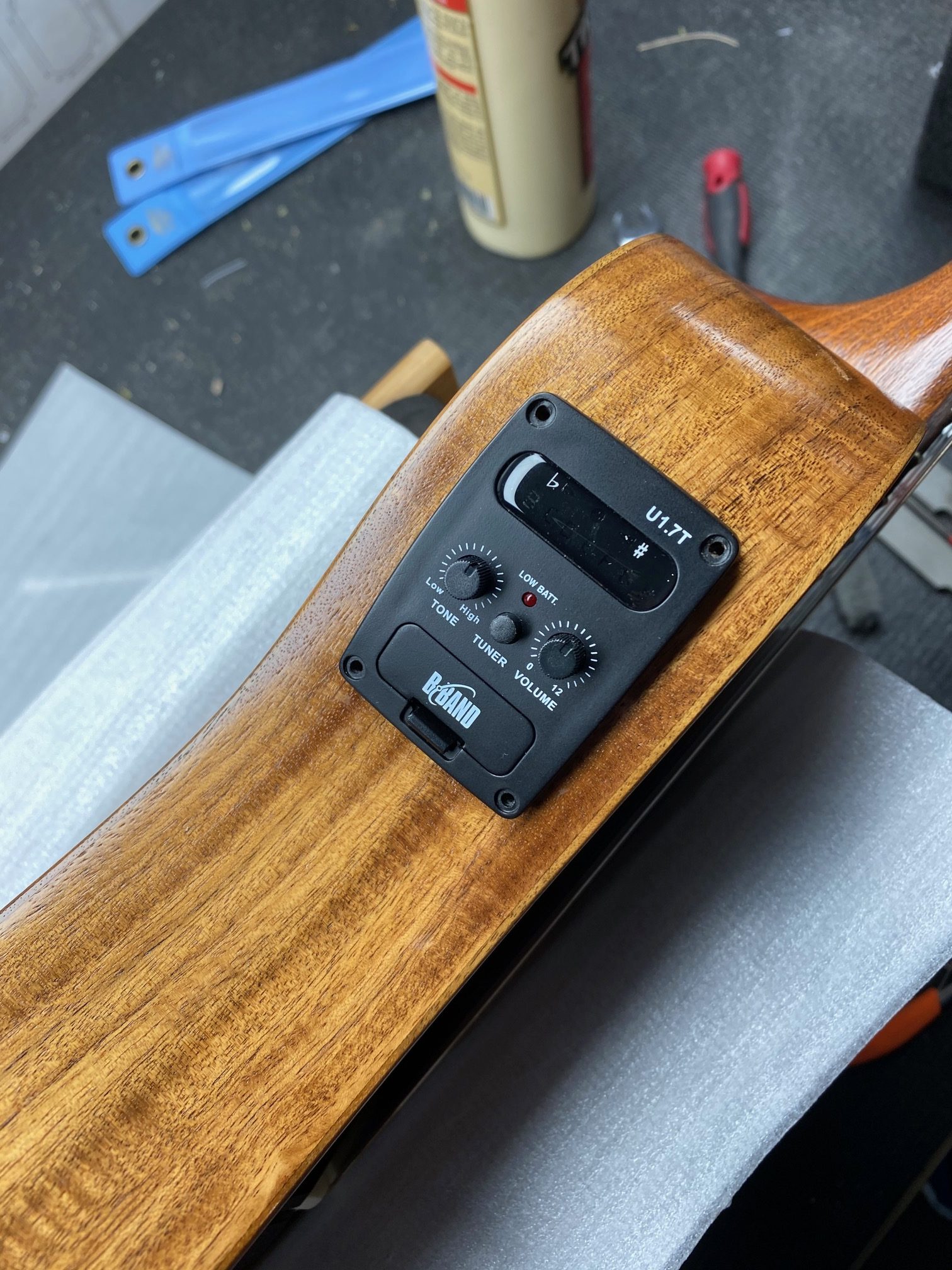
- My “sick” UkuleleMy poor sick and injured ukulele is in the “hospital” at Twisted Wood Guitars (where I bought it). The good news is that it is repairable and I should have it back soon. Thanks!

- How I select the music to arrange?I’ve been asked how I select the music to arrange. Well, I play through a lot of music that I can find (original folios or other arrangements) based on the theme of the book I’m working on. It certainly improves my sight reading skills. I then select based on playability (some pieces are much too difficult for my purposes but I don’t shy away from challenging music) and enjoyability in terms of being able to listen to the music and liking it. Less than half of what I explore meets these criteria.
- How does ancient tablature compare to modern musical notation and modern tablature?I’ll show two images of a specific piece so can compare the scores. In a previous post, I explained how to read the ancient tablature.This piece shows another challenge in arranging this music. If you look at bars 9 to 10 in the original tablature, there is no indication on how this is actually played. In the modern music (bars 10 to 11), I have separated out the upper melodic part (which is usually played with the fingers) from the lower supporting harmonic part (which is usually played with the thumb) which makes it easier to interpret and play the piece.I also put in a first and second ending on the repeat. This gives the piece a definitive ending that the modern ear will more easily recognize.This piece utilizes what is known as a Picardy third or cadence. The music is in D minor but the end of each phrase ends on a D major chord, which gives it an emotional uplift.The modern score does not include any dynamic markings (even the tempo marking is modern and not in the original score) and players at that time would have played this using their own interpretation or ornaments (e.g. trills) based on the conventions in the 16th century.Have fun and see if you can spot other challenges between the two scores (yes, there is one other major difference).


- How do you read ancient tablature?It’s not that difficult. I’ve shown a sample score as well as an illustration of a Renaissance guitar (you can do the same comparison for lutes and lute tablature).The letters in tab correspond to the frets (a is an open string, b is the first fret, etc., with the letter j skipped by convention, and I’ve seen up to the letter k for the 9th fret and l for the 10th fret) and the horizonal lines correspond to the strings. The length of the notes is the vertical line above the strings — the single tail represents an quarter note, two tails are an eighth note, three tails are a sixteenth note, etc, and dot in the tail increases the note length by a half (e.g. a dotted eighth note). Keep playing the rhythm until it changes. The dot under the note says to play the note with your index finger.Tablature is quite compact and “dense” and does not require a key signature. You can show a lot with a little.Simple isn’t it. Please try it.It does have some issues in that the upper and lower voices are difficult to separate, especially if they have different rhythms. It’s also hard to indicate phrasing and there are no dynamic markings.Modern tablature is similar using numbers instead of letters for the frets, with zero indicating an open string (easier and quicker for the mind to grasp).
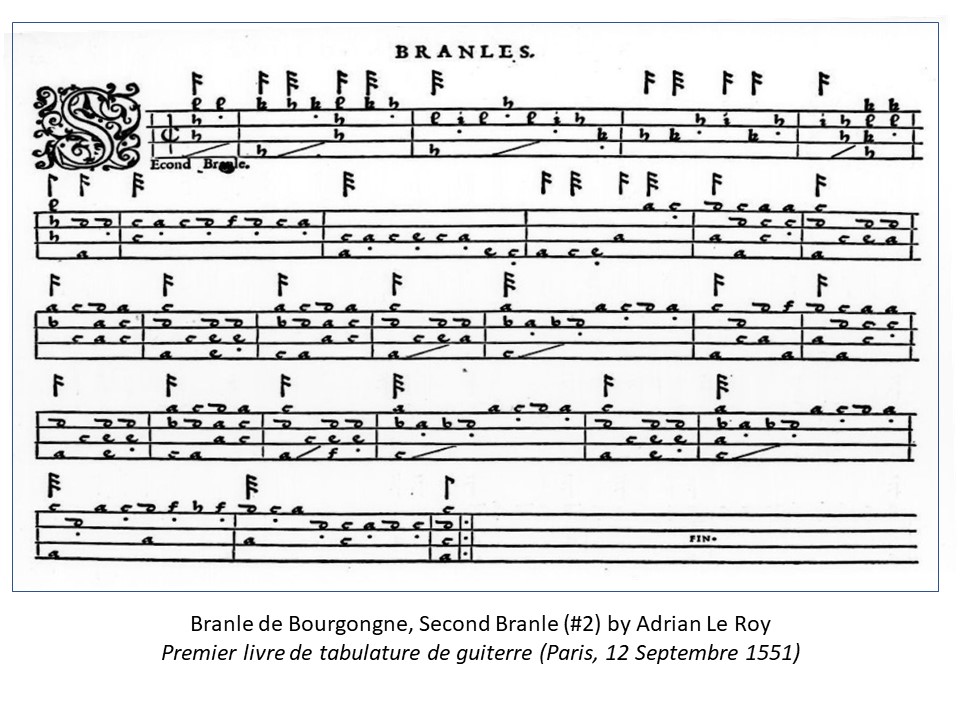

- Ukulele versus Renaissance GuitarHow is the soprano, concert or tenor ukulele the same, yet different than a Renaissance guitar?Below is a photo showing two of my instruments. The top one is a custom built replica Renaissance guitar. The lower one is a tenor ukulele made by Twisted Wood.From my books of arrangements for ukulele …The first documented instance of a guitar is in 1488. By the 1500’s, the Renaissance guitar was strung with 4 courses with the highest pitched single string tuned A, double E strings, double C strings and the lowest course was a split octave with a lower G and an upper G.The modern ukulele is a direct descendent of this, although with single strings rather than courses. If the ukulele is tuned with the upper G in the fourth string, it has re-entrant tuning (the familiar “my dog has fleas” that many of us learned). A ukulele with the lower G has linear tuning.No wonder ancient music sounds so wonderful on a ukulele.
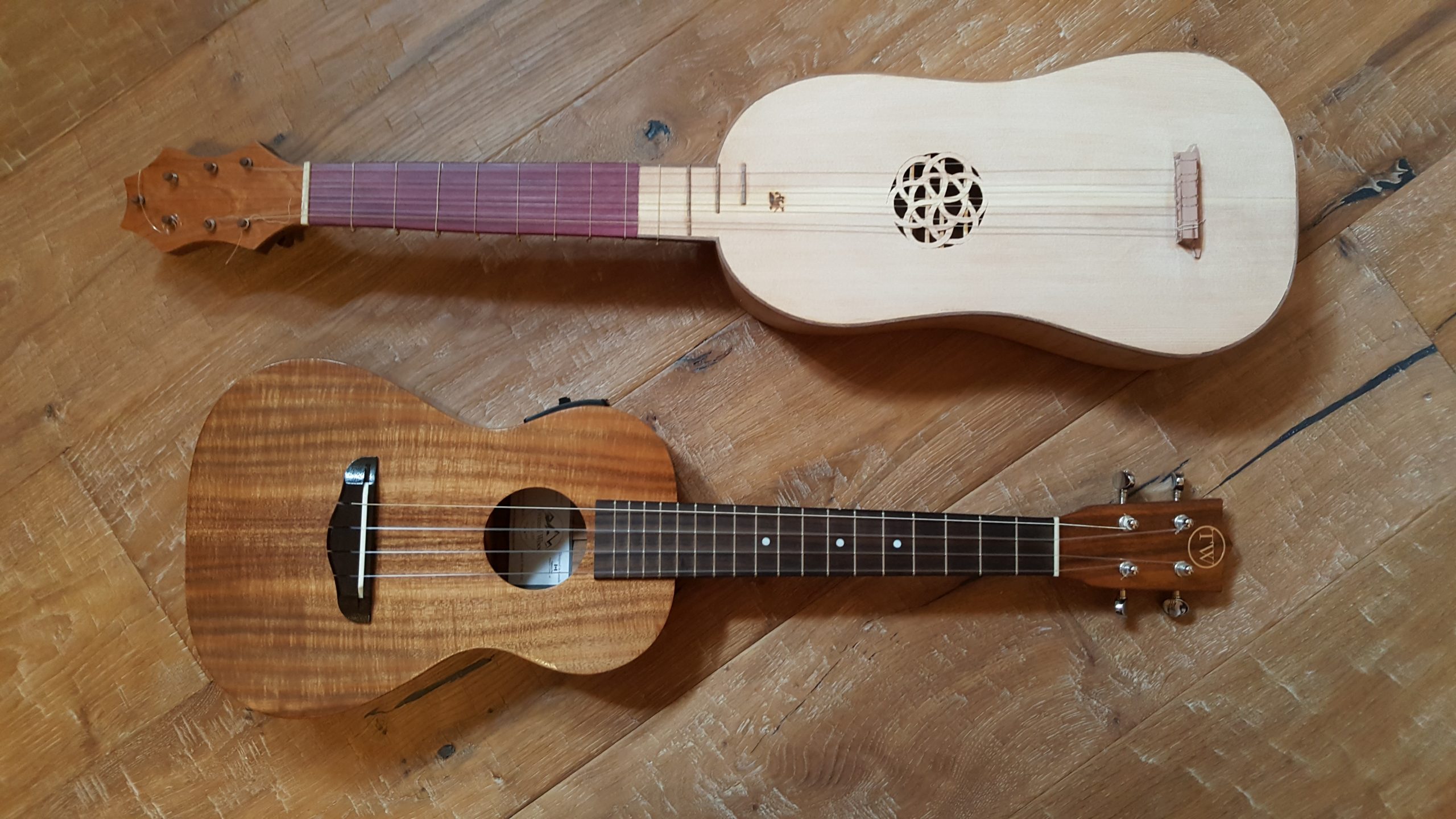
- Lots of Renaissance FavoritesI’m going to start arranging works by Adrian Le Roy (ca 1520-1598). He was a musician and publisher and his published folios are readily available online (see the table of contents image from his first book).I’ve found many transcriptions and arrangements of his music. All of them take Le Roy’s tablature and transcribe it back to guitar notation but with modern standard guitar tuning. The Renaissance guitar at the time was tuned the same as the modern ukulele (i.e. like a guitar with a capo on the 5th fret) and with double courses of strings, some tuned in octaves (I’ll post a more detailed description and pictures in a later post).So, I am taking Le Roy’s tablature back to musical notation for modern ukulele with linear tuning (either soprano, concert or tenor ukulele) or Renaissance guitar.I am also working on arrangements of music by Guillaume Morlaye (mid-16th century) and others for the ukulele (there are 9 original books in total in 2 series).
 NOTE: The following books were published in 2020 (had lots of time due to COVID lockdowns):
NOTE: The following books were published in 2020 (had lots of time due to COVID lockdowns):- Le Roy Favorites on the Ukulele: Book 1 (May 21)
- Morlaye Favorites on the Ukulele: Book 1 (June 22)
- Brayssing Favorites on the Ukulele (July 30)
- Gorlier Favorites on the Ukulele (August 23)
- Arcadelt Favorites on the Ukulele (September 16)
- Le Roy Favorites on the Ukulele: Book 2 (October 6)
- Morlaye Favorites on the Ukulele: Book 2 (October 22)
- Researching John DowlandI always research a piece of music and/or the composer as I arrange it and a summary of what I’ve found is included in the books I assemble. For John Dowland, there is a definitive book by Diane Poulton (you’ll notice her index number at the bottom of the piece I arranged) written in 1972 which is available for free at archive.org. I haven’t read the whole book and use it for reference. She was a an English lutenist and musicologist.I also try to find original folios of the music, many of which are downloadable. Here are two samples of “My Lord Willoughby’s Welcome Home” from notebooks of 1610.
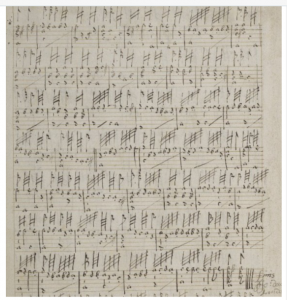

- Dowland FavoritesI’m looking at more music to arrange for ukulele and have been researching Adrian Le Roy, Gregoire Brayssing, Guillaume Morlaye, Simon Gorlier, and John Dowland. I may start with some easy/intermediate pieces by Dowland (the first one being Tarleton’s Resurrection) but will tackle other composers if there is interest. NOTE: Dowland Favorites on the Ukulele was published on April 24, 2020.
- Yuletide music readyJust finished a book of Yuletide or Christmas music (it will be available for purchase this fall). I had a lot of fun researching the origins of these pieces and some older versions don’t sound at all like our modern renditions so I included both versions and you can see for yourself. Each piece can be played as an instrumental solo or sung (a separate booklet has all the words that you can share with your friends as they sing along with you). Included in the book is a brief history of each piece with an explanation of its origins and development. NOTE: The book was published on October 7, 2019.
- Planning for Yuletide musicI know it’s hard to believe, but I’m starting planning for “The Yuletide Ukulele”. The music takes many months to research and arrange so I have to start now to be ready for next Christmas. Of course the music needs to be ancient (nothing later than18th century if possible) and there is too much of it out there to do it all. The main book will be the music, including chords, with a separate booklet with the words if there are any. Here’s a list of possible pieces and I’m looking for feedback on these please …Coventry CarolThe boar’s head carolIn dulci jubiloResonent in laudibusRiu, riu chiuHodie Christus nastus estPsallite unigeniteGreensleeves (What Child Is This)Branle de l’OfficalJoseph lieberEs is ein Ros entsprungenCherry Tree carolViens ViteCiaccon in partie variataAll you that are good fellowsThe old yeare now away is fledAngels We Have Heard on HighSilent Night (actually 1818 so it’s 19th century)The First NoelThe Holly and the IvyJesus Christ the Apple Tree
- Ballads and SongsAm working on completing the next book, which is a departure from what I’ve been doing. It’s a book of ballads and songs (ancient of course) where the melody is written out, chords and words given and then some directions on how to put it all together with a selection of suggested strumming/picking patterns. Almost done …
- Music by Bach and sonsWorking on arranging more music for ukulele written by Bach. There are 18 pieces here by JS himself and some of his sons (JCF, WF, and CPE) ranging from beginner (equivalent to grade 2 guitar/piano) to advanced (grade 8 guitar/piano).
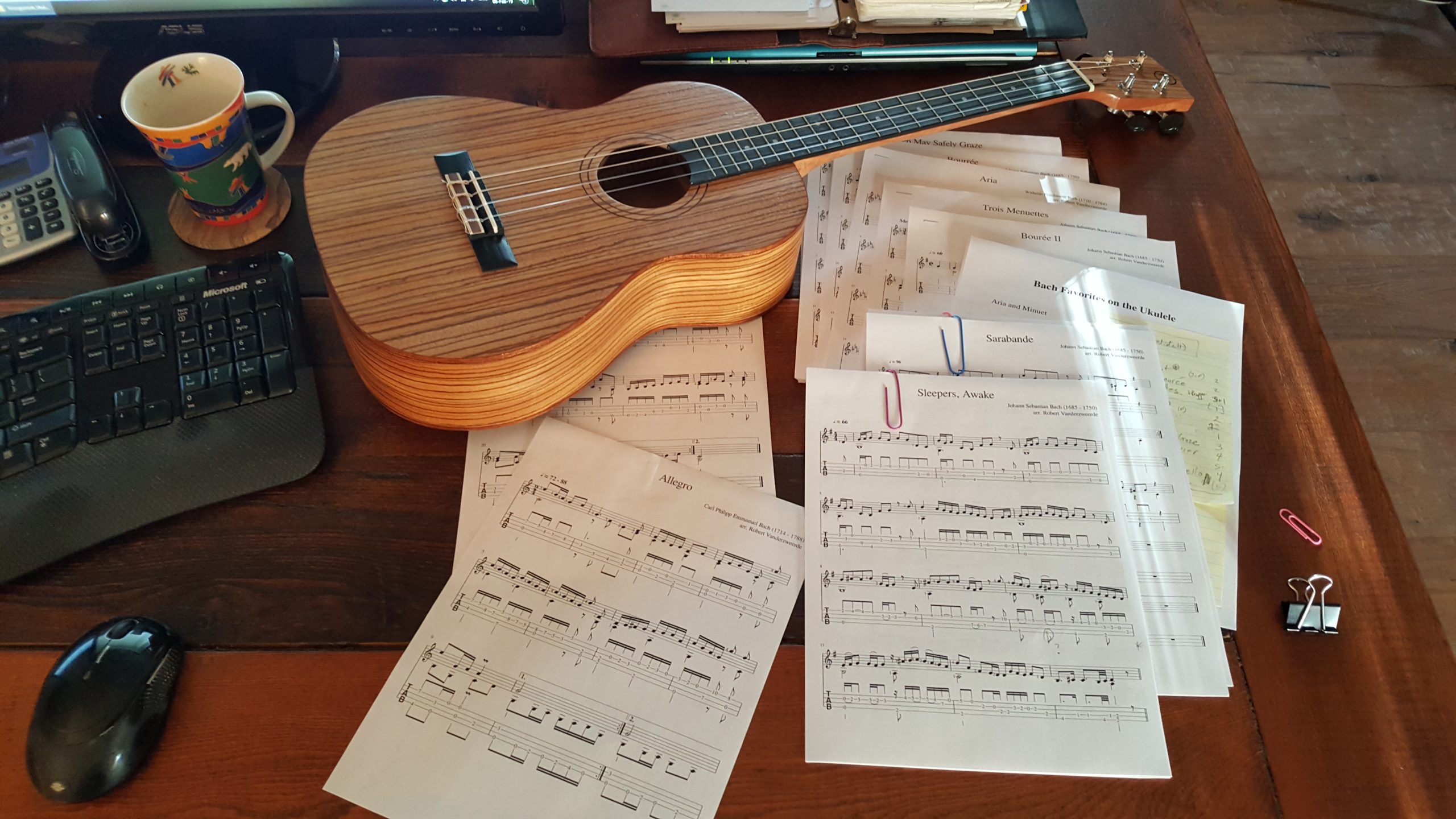
- Recital at Mount Royal UniversityPerforming a Gigue on the tenor ukulele and Pavan IV on the baritone ukulele at a recital hosted by Brad Mahon at Mount Royal University. Photos courtesy of Brad Mahon.
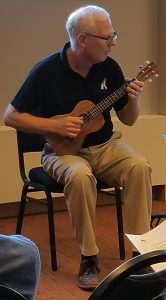

- An Arrangement from the BaroqueI am working on a book of Baroque pieces right now. Here’s an illustration of a score from that period (it’s not the one that I am arranging — it’s an illustration of a score from that time period) by Weiss. And here’s a sample of a Menuet by Weiss that I am including in the book using modern musical notation and tablature.
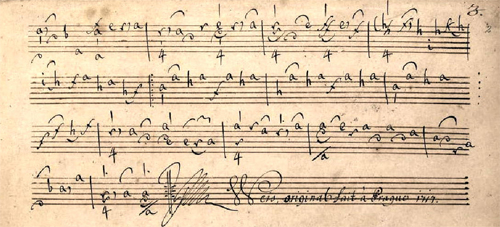
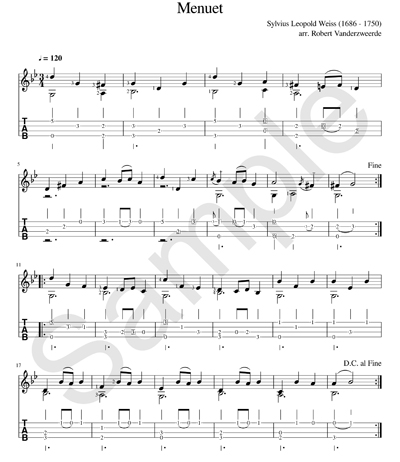
- First Arrangement from the RenaissanceAlmande “La mon amy la” is a piece by Adrian Le Roy and is included in his 1551 book “Premier livre de tabulature de guiterre”. Here’s what the music looked like in his book and the modern arrangement in “The Renaissance Ukulele”.Here’s a generated sound file … https://soundcloud.com/ancientmu…/almande-la-mon-amy-la-60You can hear a recording of this played on a Renaissance Guitar (a four course guitar) by searching on YouTube for “early music muse the history of the guitar in four and a half minutes”. It’s the first piece on the video but the rest of the video is fun to watch.


